
Impressum:
Owner and publisher:
BioNanoNet Forschungsgesellschaft mbH
Kaiser-Josef-Platz 9, 8010 Graz, Austria
UID: ATU 63046279, FN 285326 y
Graphic Design & Layout: Jenny Zeevi
Cover: Genert AI


Impressum:
Owner and publisher:
BioNanoNet Forschungsgesellschaft mbH
Kaiser-Josef-Platz 9, 8010 Graz, Austria
UID: ATU 63046279, FN 285326 y
Graphic Design & Layout: Jenny Zeevi
Cover: Genert AI
The urgent need for sustainable production practices has made clean manufacturing solutions a central pillar of Europe’s innovation agenda. As industries face mounting pressure to reduce emissions, minimize waste, and optimize resource use, science is delivering transformative pathways that bridge environmental responsibility with industrial competitiveness – thus, science is the enabler of the twin transition! Scientific research is generating new knowledge and actively reshaping how materials, processes, and entire value chains evolve toward sustainability. Advances in materials science, chemistry, and digital technologies are enabling cleaner production methods, unlocking circular economy models, and reducing reliance on scarce resources. At BNN, we see a clear trajectory: clean manufacturing is no longer an optional add-on but an essential component of resilient industry – enabled by scientific work.
In this issue, we share examples of scientific research outcomes as well as support beyond science, shaping clean manufacturing from several BioNanoNet Association members, such as RECENDT , CHASE and BABEG . They each share exciting projects, from drying and curing processes, to process digitalization, to industrial symbiosis – we are proud to have members in such a wide range of fields! Another example is the InnoMatSyn project, coordinated by BNN, which focuses on advanced/innovative materials (AdMa). AdMa have the potential to greatly improve sustainable manufacturing.

By enabling the development of next-generation materials and fostering greener processing methods through gaining synergies of funding, InnoMatSyn exemplifies how collaborative research can directly address pressing societal and industrial challenges. With the successful implementation of the project, we will have paved the way towards synergetic cross-border-collaboration, including more efficient funding of the uptake of AdMa enabling safer and more sustainable production, while also to enhancing Europe’s technological sovereignty and economic resilience.
As we highlight scientific progress and flagship projects in this edition, we invite our readers to reflect on how research-driven innovation can serve as a cornerstone of a cleaner, more sustainable industrial future. The impact of science on manufacturing is clear: it enables us to rethink what is possible, redesign how we produce, and reimagine the future of industry.
Finally, I cordially invite you to participate in the Annual Forum 2025, October 7th in Linz, Austria – with great scientific insights, excellent presentations and co-creating consortia for the WP2026/2027 calls.
See you soon in Linz!
Andreas & the BNN Team
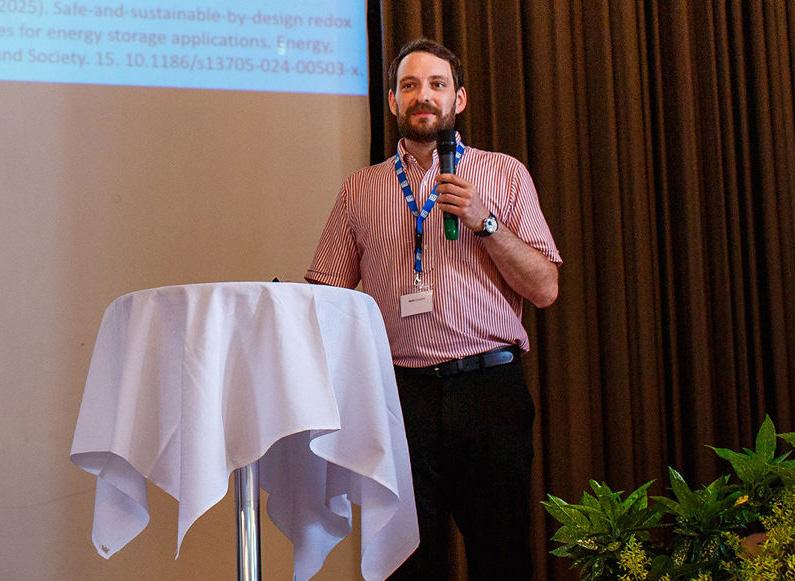
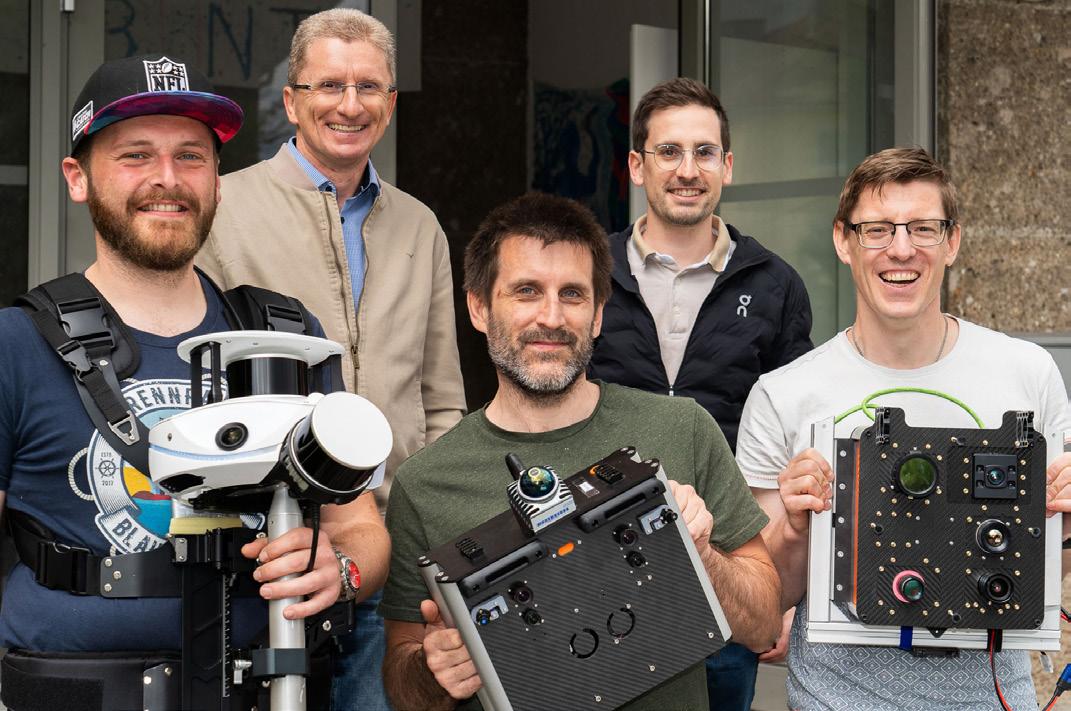
A New AI Tool for Safer Chemicals developed by
Recap of the External Stakeholder Webinar on the Practical Implementation of the SSbD Frame work in Industrial Applications
Hey there! My name is Katharina LangHogrefe and I joined the BNN team in June 2025. Over the summer I have already gotten to know several projects and members at BNN and now want to introduce myself to the broader community.
With roots in northern Germany and the Alps, I grew up in Styria and studied Chemistry and Advanced Materials Science in Graz. I got a taste of foreign air during a year at Chalmers University in Gothenburg and a research stay at the University of St. Andrews, Scotland. At the latter I deepened my knowledge of sodium conducting materials – one key aspect in my PhD thesis on solid electrolyte materials. My curiosity for innovative materials is unquenched and I especially enjoy the interdisciplinary nature of this field. After a year as PostDoc at the TU Graz I took the leap into industry.
At a semiconductor company I worked as a project manager for global public funding and was at the interface between many different stakeholders: researchers, developers, funding bodies, project managers, networks & associations, and others. I handled proposals and public-funded projects on sensing topics for medical, material and battery applications with different Austrian and international partners. I especially enjoyed building networks
with various stakeholders and seeing R&D arrive in real applications.
Here at BNN I now combine my scientific expertise and experience with funded R&D projects in my role as Chemicals and Advanced Materials Expert. Currently I am working on engineered living materials in the PEARL-

Katharina Lang-Hogrefe- Scientific Research
engineered living materials in the PEARLMat project and will integrate my knowledge on innovative materials and sustainability in the SSbD (Safe-and-Sustainable-by-Design) competence of the team. I look forward to diving deeper in upcoming projects with SSbD in various use cases and other exciting topics. I hope to meet some of you at our next BNN event!
Hello everyone! I've been with BNN since April 2025 and would like to take a moment to introduce myself. My name is Esther Schagen and I am originally from Berlin and studied fashion design at HTW Berlin.
After completing my degree, I moved to Barcelona to join my partner and started working in various fields. Eventually, I found my way into administrative office work. Since then, I’ve worked in customer service as well as in back and front office roles as an Office Manager and Personal Assistant.
To escape the Spanish heat, I regularly spent my summer holidays in Austria with my children.
Esther Schagen, Administration

We have family here and are big fans of Styria.Three years ago, I had the opportunity to move to Graz — a place that had long felt like a second home to me. Since then, I’ve been living here and really enjoy the more laid-back city vibe compared to my previous homes.
At BNN, I support the team as Office Manager by helping to ensure that day-to-day operations run smoothly. I'm very happy to be part of the team and look forward to meeting you all in person soon!
Hi, I’m JennyZeevi! Born in Ukraine, I moved with my family to Israel when I was 3 years old. I grew up there and went to university at Technion to study design communication and at the University of Haifa to study humanities.
In Israel I have worked as a digital marketing designer for an advertising company and for an agricultural startup. After that I moved to Greece where I also worked as a digital designer for a company in Athens, and later as a freelancer in the field of robotics.

In 2023 my husband and I decided to move to Austria. After learning German and participating in organizations for women in high-tech, I worked for a company in Gleisdorf where I was responsible for their digital marketing, website accessibility, user experience and social media. On the side I also worked as a freelancer developing websites from art to hospitality and beyond.
Now at BNN I am responsible for design and communication, creating visual materials for print and digital, developing websites, laying out this QUARTERLY magazine and designing logos, social media posts and animations.
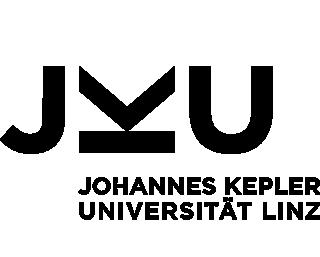
The Johannes Kepler University Linz (JKU) is a public university in Austria. The JKU considers itself a strongly rooted, regional institution but at the same time, an internationallyoriented university now emerging as a leading European academic institution. As a broadbased university pursuing an interdisciplinary, transdisciplinary and future-oriented approach, the JKU is contributing significantly to transformation and building resilience in education, academia, science, research, and in society.
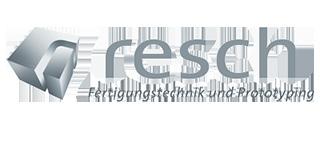
Resch GmbH was founded in 2000 as a familyowned business and is now a thriving GmbH (LLC) with offices and a factory in southeastern Styria (Austria). Their vision is to become a leader in the sector of prototype construction and manufacturing engineering. Resch GmbH offers mechanical manufacturing, additive manufacturing, automation, service and fixture construction and completion with the motto “We solve the unsolvable – and we do it with the highest quality.”
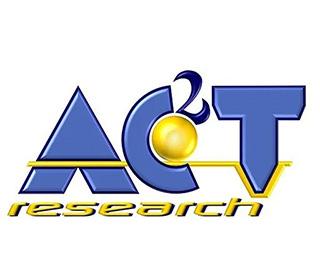
AC 2T research GmbH, the Austrian Competence Centre for Tribology, is an R&D service provider that develops innovative solutions in the area of tribology, the study of friction and wear. AC²T is one of the central points of contact for research activities in tribology in Europe and is considered a powerful market participant. It focuses on the transfer of comprehensive tribology knowledge to the industry by providing highquality staff and state-of-the-art facilities in line with a synergetic, cost-optimised “multi-user system”.

The School of Geography, Earth and Environmental Sciences (GEES) is at the forefront of tackling global environmental challenges, such as climate change and sustainable development through its research and innovative education. With excellent facilities and a passionate community, we aim to inspire the next generation of environmental leaders.

GreenDecision Srl
The mission of GreenDecision is to transfer academic expertise into the business world, delivering concrete results for addressing corporate sustainability challenges. GreenDecision aims to support companies, research consortia, and public institutions in their sustainable decisions, promoting choices that respect the environment and protect human health through specialized consulting and innovative decision support tools. The areas of expertise covered by our teams are environmental, social and economic sustainability assessment, Safe and Sustainable by Design, data management, predictive modelling (incl. AI), software-based Decision Support Systems, regulatory risk assessment and management of chemicals and emerging materials (e.g. REACH).

BABEG – Kärntner Betriebsansiedelungs und Beteilungsgesellschaft mbH
BABEG | Kärntner Betriebsansiedlungs- und Beteiligungsgesellschaft mbH is the central location agency and leading company for research, technology, and innovation in the state of Carinthia. Their goal is to sustainably strengthen Carinthia as a business location and promote a future-oriented innovation ecosystem. BABEG is the central contact point for companies, investors, and research institutions that want to grow in Carinthia and drive innovation. Under the motto "Success in Carinthia," they promote sustainable investments, support innovative research projects, and strengthen Carinthia as a business and technology location in the heart of Europe.

We at BNN were pleased to join forces with BioNanoNet Association members BOKU and BRIMATECH on the publication “Safe and Sustainable by Design: Development of safe and sustainable innovative chemicals and materials” for the ITA-ÖAW NanoTrust Dossier 67 earlier this year. The article recommends framework conditions and additional measures for improving coordination and support in order to promote adoption of SSbD, especially in SMEs.
Olscher, C., Gressler, S., Prenner, S., Jung-Waclik, S., Pavlicek, A., Resch, S., Falk, A., Gazsó, A., & Part, F. (2025). Safe-and-Sustainable-by-Design (NanoTrust-Dossier No67en - Mar 2025). ITA Nanotrust Dossiers, 2025/03/17. 10.1553/ita-nt-067en
Contact Andreas Falk andreas.falk@bnn.at
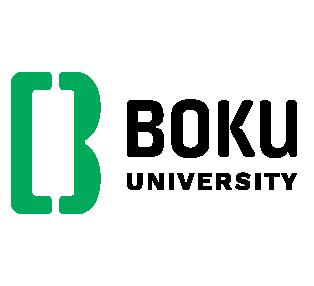

BNN’s regulatory specialist Daniel Garcia was invited to give a workshop for the Italian Technology Platform for Nanomedicine in July 2025. The workshop, titled “Nanoparticle Medicinal Products: Key Considerations for Early Development”, was held with the aim of providing participants with a comprehensive understanding of the regulatory framework governing nanomedicine. Daniel equipped early-stage researchers and professionals with the necessary tools to navigate the complex pathways of developing nanoparticle based medicinal products (NBMPs). Key objectives included familiarizing attendees with global and European regulatory bodies, clarifying the categorization of medical technologies, and highlighting both the challenges and opportunities in the creation of innovative nanomedicines.
During the session, key topics were addressed such as the manufacturing and safety assessment of NBMPs, regulatory gaps, and early interactions with regulatory agencies. Participants gained practical knowledge on procedures such as orphan drug designation and the requirements for First-in-Human (FIH) studies, enabling them to better understand how to add value to their projects from the early stages. The impact of the workshop was significant, strengthening participants’ capacities to advance the translation of their research, nanoparticle based in an environment organized in collaboration with the Italian Platform of Nanomedicine.
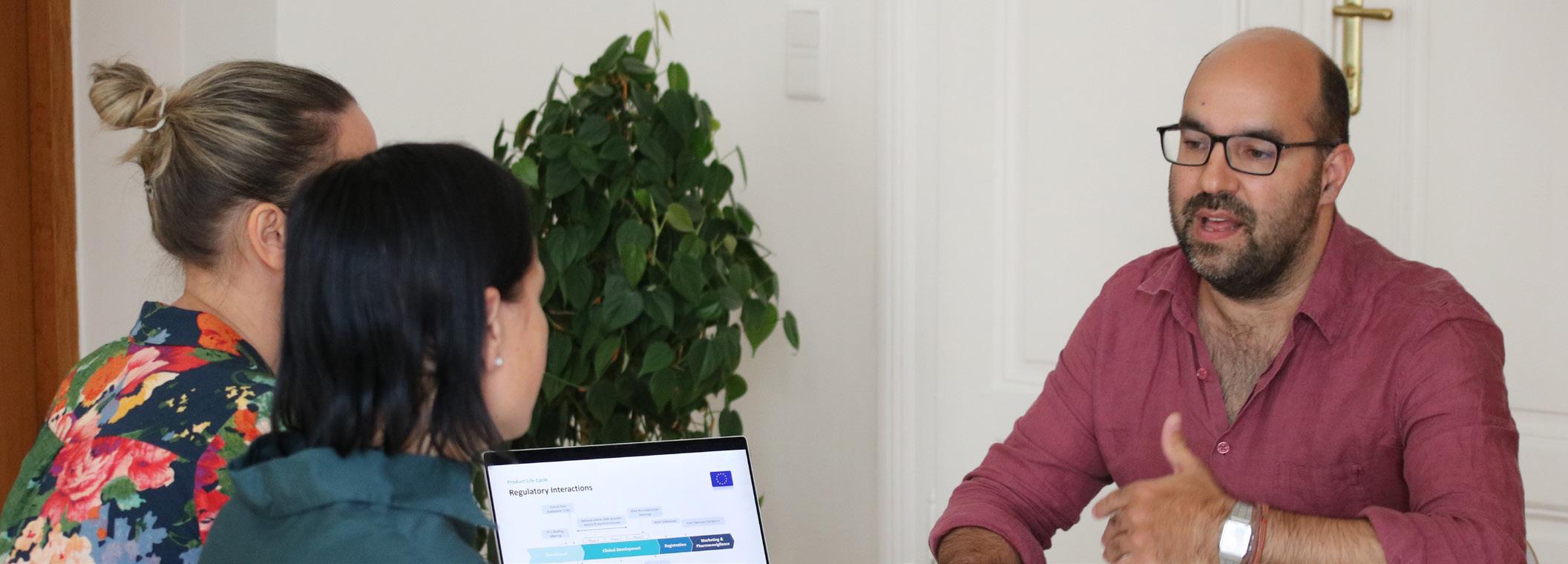
On 10 July 2025, the NSC contributed to the success of NanoTexnology (NN25) in Thessaloniki, Greece, through a dedicated “Special Session on Applying nanosafety competencies to the Advanced Materials arena”, chaired by Andreas Falk (BNN) and Cris Rocca (UoB). It featured a keynote presentation by Eva Valsami-Jones (UoB), “From nanomaterials to advanced materials and their safe and sustainable future”.
The session brought together leading experts to explore the effective application of the Safeand-Sustainable-by-Design (SSbD) principles to advanced materials innovation. Presentations covered topics such as the advanced materials ecosystem (Andreas Falk, including the InnoMatSyn-project), governance and policy for SSbD (RIVM, presented by Andreas Falk), stakeholder negotiation in SSbD decision-making (Massimo Perucca, HUB360, including the INTEGRANO-project), and workplace safety regarding engineered nanoparticles (Alexandros Alexopoulos, CERTH).
The session concluded with a wrap-up discussion that reinforced the NSC’s commitment to fostering cross-sectoral collaboration and policy alignment in the transition from nanomaterials to advanced materials.
The second part of the NSC session, chaired

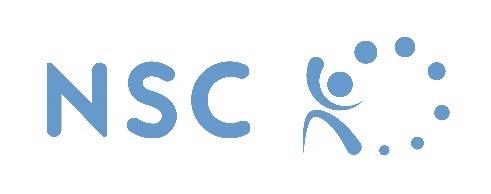
by Eva Valsami-Jones and Cris Rocca (both UoB), brought together experts to discuss the intersection of nanosafety and advanced materials innovation.
The NSC-sessions highlighted the importance of integrating safety competencies into the design and deployment of advanced materials to foster a more responsible and sustainable innovation ecosystem.

Contact
Andreas Falk (NSC-Coordination Team) andreas.falk@bnn.at
Beatriz Alfaro (NSC-Support Team) beatriz.alfaro@bnn.at https://nsc-community.eu/

On 16 June 2025, BNN’s CEO Andreas Falk had the great pleasure of leading a workshop called “Safe-and-Sustainable-by-Design (SSbD) – was hat das mit mir zu tun?” (“What does that have to do with me?”) for high school students at HTBLA Kaindorf in Austria.
After setting the stage about the three pillars of sustainability, the three dimensions of SSbD, its indicators and 5 steps, as a real-life SSbD implementation example Andreas introduced the case studies of the PLANETS project, in which BNN is a partner and which is developing safer and more sustainable alternatives for chemicals with surfactant,

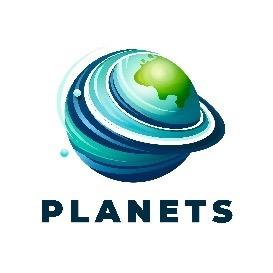
flame retardant or plasticising functionalities. All three of these chemical classes have a large chemical-market share, highlighting the importance of research and EU-funded projects for improving chemicals that affect our daily lives.
Many teenagers in the audience will be the engineers and scientists of tomorrow, future professionals who will play a big role in reaching the EU’s aim to become climateneutral by 2050. With this in mind, the engagement of the workshop’s participants in performing a practical exercise of Tier 1 SSbD assessment of an everyday consumer product assured us that, if we invest in educating our young people, we can shape the health of people and planet in the future!
Contact Andreas Falk andreas.falk@bnn.at www.project-planets.eu

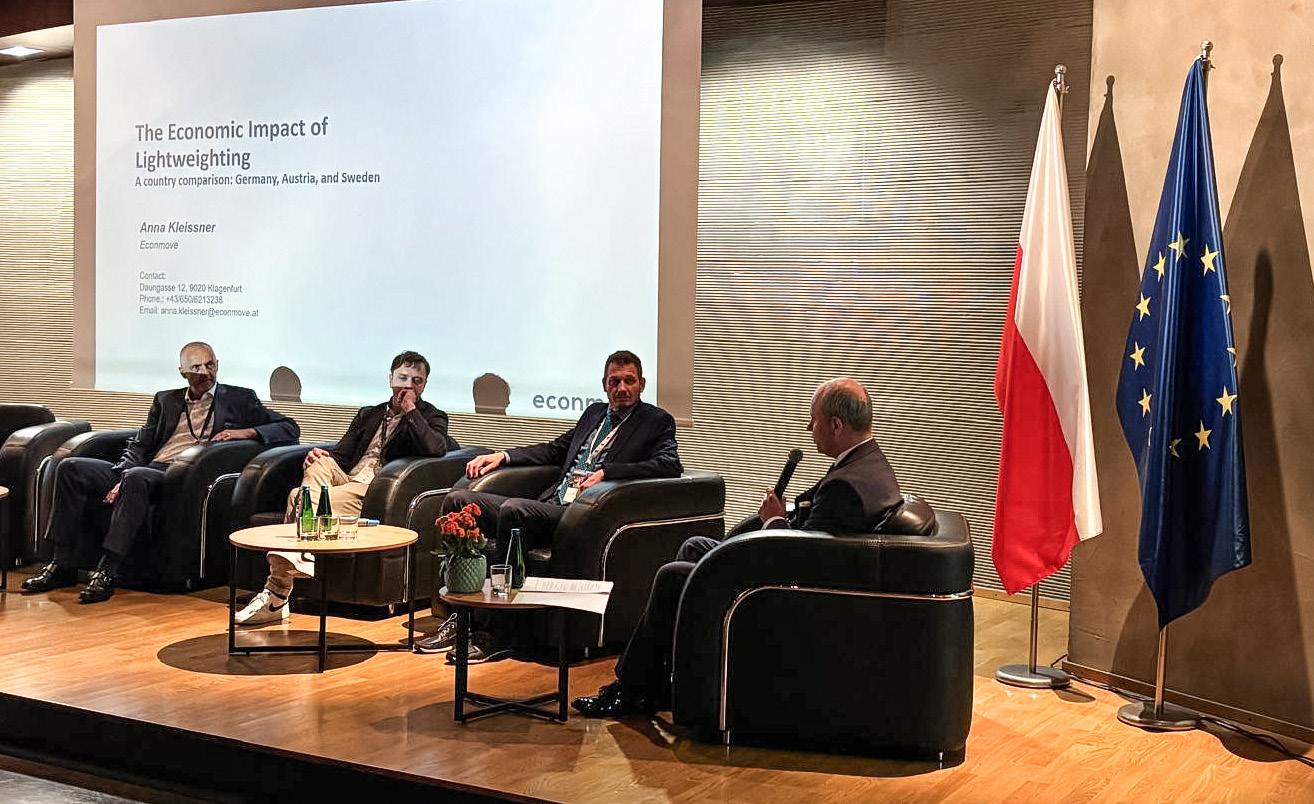
It was an honor to have CEO Andreas Falk represent Austria in a panel discussion at the 5th European Lightweighting Network (ELN) Conference in Krakow from 4-5 June 2025.
The European Lightweighting Network is an initiative by public authorities from Germany, Austria, Sweden, Spain, Belgium, Slovakia and Poland. The purpose of the network is to establish a platform and agenda for common goals concerning the reduction of emissions through reduced weight in products.
With the topic "Lightweight materials technology impact on European Economy," Andreas, as coordinator of ATIMA (Austrian AdMA-community) and InnoMatSyn (EU-funded project) gave the Austrian perspective while Christian


Olsson, Vice Director of LIGHTer — a strategic innovation programme, and program manager of RISE Research Institutes of Sweden, represented Sweden and Werner Loscheider, Federal Ministry for Economic Affairs and Energy represented Germany.
Thank you to Jaroslaw Frydel of Łukasiewicz Research Network — Krakow Institute of Technology for moderating!
Contact
Andreas Falk andreas.falk@bnn.at



Tech Forum Millstatt took place from 1 - 4 June 2025 and was organised by TU Wien, with support from BNN and several BioNanoNet Association members such as Graz University of Technology, Paris-Lodron University Salzburg, JOANNEUM RESEARCH, BABEG and more. Researchers from Austrian universities and decision-makers from science, administration and industry came together to discuss current trends and future requirements in high technology and to jointly find innovative solutions and potential for cooperation. In its 2nd edition, TFM focused on Quantum technology, artificial intelligence and sustainable wood innovations.
BNN’s Clemens Wolf organized and chaired the Monday afternoon session on wood as an advanced material.
Read more about the event here

Contact Clemens Wolf clemens.wolf@bnn.at



THIS PROJECT IS FUNDED BY THE CLIMATE AND ENERGY FUND AND CARRIED OUT AS PART OF THE RTI INITIATIVE FOR INDUSTRIAL TRANSFORMATION.
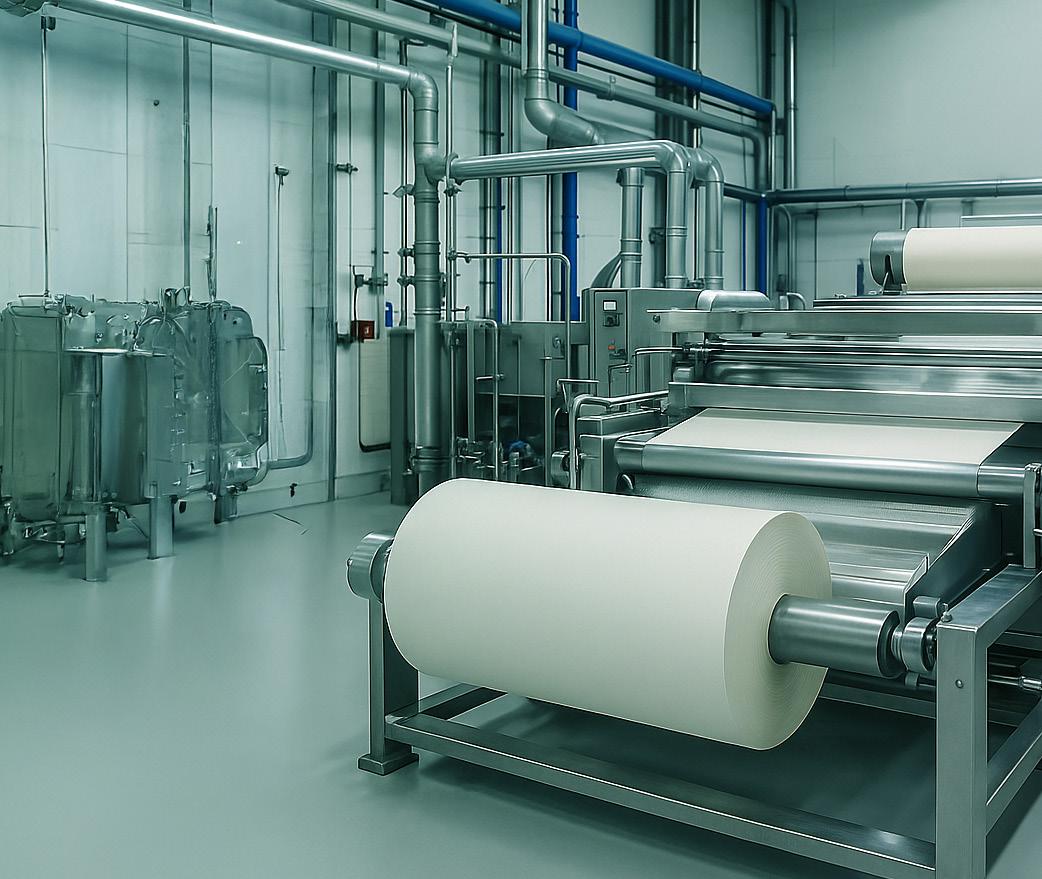
Drying and curing processes account for nearly a quarter of the global industrial energy demand, with industries such as paper, wood, ceramics, and food being heavily reliant on these energy-intensive processes. In Austria, phenolic resin paper impregnation plants –
producing high-quality laminated panels used e.g. for construction, furniture, electronics, and flooring – are a prominent example. These production plants currently consume large amounts of natural gas and thus emit significant amounts of CO₂, making them a key target for clean manufacturing innovation.
The ImpreDry project is carried out by the scientific partners Austrian Institute of Technology (AIT) and Research Center for Non-Destructive Testing (RECENDT), in cooperation with the industrial partner Fundermax. The consortium pioneered the use of digital twin technology and inline vibrational spectroscopy to better understand and control phenolic resin curing at Fundermax’s production facilities. Previous research projects demonstrated that linking real-time process data with predictive models could enable significant energy savings while maintaining high product quality. These results provided the scientific and industrial foundation for a more ambitious approach to efficiency and decarbonization.
In the ImpreDry project the same consortium takes this foundation further, targeting a 66% reduction in natural gas use and up to 17,600 tonnes of annual CO₂ savings. Its central innovation is a Digital Twin of the impregnation process – an advanced virtual replica that dynamically responds to real-world conditions. By continuously monitoring key parameters such as temperature, airflow, and solvent concentration, the digital twin enables adaptive control of drying and curing. This ensures precise resin processing with minimal energy input, while complying with strict safety standards for flammable solvents.
To ensure a constantly high product quality, RECENDT is developing an inline near-infrared (NIR) spectroscopic sensor combined with automated chemometric data evaluation which provides non-contact, non-destructive, real-time insight into the curing kinetics – a scientific advancement which allows data-driven process control that not only safeguards product quality but also reduces the need for labor-intensive offline testing at the production plant [1]. This ensures a much quicker reaction time to varying process conditions and thus significantly reduces the amount of out-of-spec product, leading to a significant reduction in wasted resources.

A third innovation in the project is ultrasoundassisted impregnation, which improves resin penetration into paper while reducing reliance on flammable solvents.
This opens the door to partial electrification of the drying process, enabling the use of renewable energy sources and further lowering energy consumption.
ImpreDry is not only a technological leap but also provides a model for industrial decarbonization. Its methods are being implemented and validated under real-life production conditions at Fundermax’s Austrian facilities, ensuring their practicality and scalability. The project’s findings will be shared widely – through workshops, scientific publications, and demonstration events – supporting adoption in other energy-intensive industrial sectors. By combining cutting-edge process analytical technology, digital modelling, and innovative impregnation techniques, ImpreDry showcases how targeted scientific
research can deliver transformative clean manufacturing solutions. The result is a pathway toward climate-neutral production that aligns with Austria’s sustainability goals and offers a replicable blueprint for industry-wide CO₂
1. Zimmerleiter, R., Kovacevic, J., Leitner, G. et al. Curing reaction kinetics of paper-based phenolic resin laminates – from laboratory measurements to inline quality control. Anal Bioanal Chem (2025). https://doi.org/10.1007/s00216-025-05983-0
Robert Zimmerleiter
RECENDT – Research Center for Non-Destructive Testing GmbH robert.zimmerleiter@recendt.at www.recendt.at



Competence Center CHASE GmbH has secured partners and funding for its new COMET Module “DeSimplify”, which marks the first step in a new direction of process digitalization, by crossing boundaries and taking off into a much bigger dimension.
Karin Wieland, Area 2 Manager and project manager of DeSimplify: “We are developing a configurable process modelling architec-
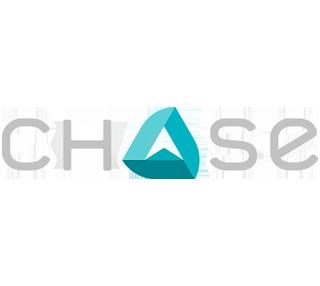
ture that combines process engineering and digitalization, AI, machine learning, fluid dynamics, and mechanistic models to provide companies in the Chemical Process Industry with a toolkit that enables them to create specific models for their specific processes. This helps them achieve greater process stability and quality, energy and resource efficiency and to make their processes more sustainable.”


As the name suggests, CHASE is actually de-simplifying, that means, intentionally not simplifying. The reason itself is simple: In the world of simulations, we use simplifications of real-world processes to reduce computing time amongst others. Reality, however, is complex, and a simple model does not reflect it accurately. Addressing this complexity requires a more refined, desimplified way. Not a simple one, and certainly not a simplistic one. With DeSimplify, CHASE aims to take the opposite route and to capture reality in all its complexity and across scales with its modelling architecture, to desimplify current state-of-the-art models linking unit operations and going across scales delivering a modelling framework that – for the first time – allows to capture the inherent complexity of (bio-)chemical processes while ensuring real-time capability.
Christian Paulik, Scientific Director: “For this ambitious project, CHASE was able to bring in partners who are pioneers in the field of innovation: Karlsruhe Institute of Technology (KIT), Technical University of Denmark (DTU), UNI Wien, TU Wien, JKU, Boehringer Ingelheim, Festo, NGR Plastic Recycling Technologies, TPK and many more.”
Patrick Pammer, Managing Director: “On our side, the project brings together a multidisciplinary team of research experts and I would like to thank our amazing colleagues who have paved the way to get us this far and who continue to do so to advance even further: Karin Wieland, Karin Kloiber, Bahram Hadadi, Christian Marschik, Niklas Pauk, Carolina Vertis and others. I would also like to thank FFG, UAR and everyone else involved for their support.”
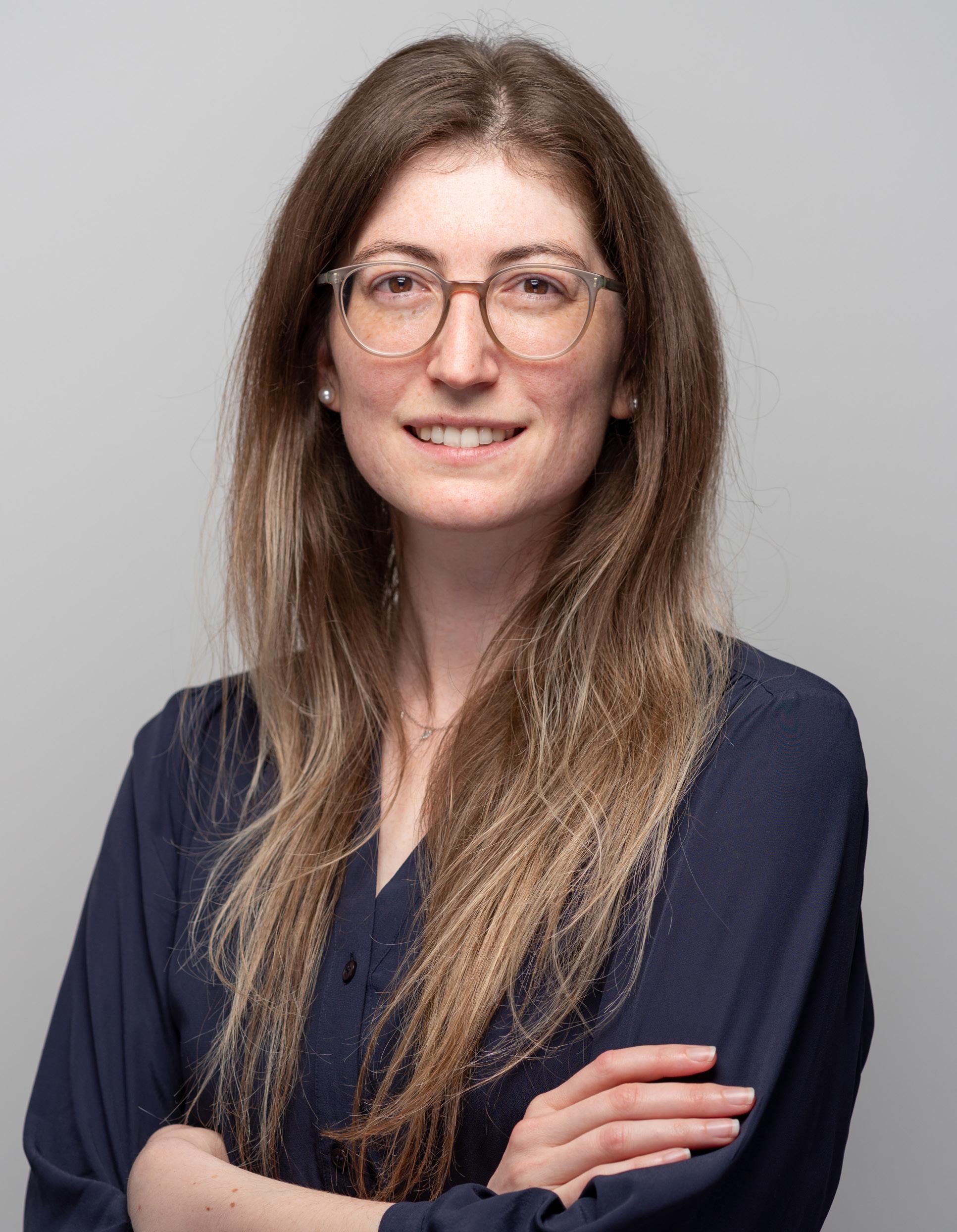
Contact Karin Wieland Competence Center CHASE GmbH
karin.wieland@chasecenter.at www.chasecenter.at
The European project SYMBIO—Shaping symbiosis in bio-based industrial ecosystems based on circular bydesign supply chains ( https://www.symbioproject.eu), funded under Horizon Europe Programme, represents one of the most ambitious attempts to operationalise industrial symbiosis as a cornerstone of the circular bioeconomy. Its guiding principle is both transformative and straightforward: what is waste for one company can become a valuable input for another.
This approach creates zero-waste value chains that maximise the use of agricultural and industrial residues, cut greenhouse gas emissions, and reduce dependence on fossil-based resources. By doing so, SYMBIO translates the European Green Deal’s objectives into practice, aligning competitiveness, innovation, and sustainability (European Commission, 2019).
The project leverages a quadruple helix approach, bringing together industry, research, policy, and society, and couples it with digital intelligence tools that integrate big data and artificial intelligence to design and monitor replicable business models. SYMBIO is not a theoretical exercise but a concrete experiment carried out in 12 pilot regions across 6 European countries. In Italy, activities involve Lombardy, Piedmont, Veneto, Friuli-Venezia Giulia, and Emilia-Romagna; in Austria, the Carinthia region; in Slovenia and Croatia, se -

lected bioeconomy clusters; in Spain, the Andalusia region; and in Belgium, Brussels-Capital, Wallonia, and Flanders.
Each region is engaged in mapping biomass streams, infrastructures, industrial ecosystems, and technological capacities. This mapping serves as the foundation for new bio-based value chains, rooted in local resources but designed for European scalability. By the end of the project, SYMBIO will deliver not only knowledge and digital tools but also 10 validated zero-waste business models capable of being replicated across the EU, demonstrating how regional contexts can contribute to a shared continental vision of circular bioeconomy.

Crucial to the project's implementation is its diverse and collaborative partner network. The project is coordinated by the Lombardy Green Chemistry Association (LGCA) in Italy and includes eight core partner organizations across Europe: ANTEJA ECG D.O.O. (Slovenia), Fundación Corporación Tecnológica de Andalucía (Spain), Alchemia Nova Research & Innovation Gemeinnützige GmbH (Austria), BABEG – Kärntner Betriebsansiedlungs- und Beteiligungsgesellschaft m.b.H. (Austria), Hrvatski drvni klaster (Croatia), Startup Europe Regions Network (Belgium), Cardiff Metropolitan University (United Kingdom), and AB Corporation (partner for business model development)
Policy Context, Training Activities, and the Role of AI
The project unfolds within a decisive moment for Europe’s bioeconomy policy. The European Green Deal sets the course towards climate neutrality by 2050, while the ongoing revision of the EU Bioeconomy Strategy (2025) aims to integrate industrial competitiveness, food security, and climate goals into a coherent frame work (Joint Research Centre, 2024). Yet, the challenges remain significant: fragmented governance, uneven adoption of national bioeconomy strategies, and persistent barriers in biomass availability, traceability, and market competitiveness of bio-based products.
SYMBIO responds to these challenges by building the missing links between policy, business, and technology. A crucial element is the integration of VCG.AI - Value Chain Generator (https://vcg.ai/) , an AI-powered platform that identifies, models, and optimises zero-waste value chains. Its BioLink® engine connects
biomass availability, technological options, and potential markets, drastically shortening the time needed to design new value chains while minimising risks of inefficiency. This ensures that regions and enterprises can quickly test, validate, and refine new business ideas grounded in circularity.
To strengthen adoption, SYMBIO places strong emphasis on capacity building and training.
Each pilot country hosts two-day participatory workshops, during which SMEs, cluster managers, and regional stakeholders learn to integrate social value indicators, apply sustainability assessment tools (LCA, LCC, ESG reporting), and use VCG.AI to design business models tailored to local feedstocks and industries. Coaching mechanisms extend this learning by providing ongoing support, ensuring that enterprises move from theoretical knowledge to investment-ready strategies. In this way, SYMBIO not only validates technological feasibility but also builds the entrepreneurial and managerial skills required to sustain longterm adoption of circular bio-based solutions.
The cornerstone of SYMBIO’s contribution lies in its focus on twelve priority bio-based products, carefully selected for their transformative potential in replacing fossil inputs, fostering local development, and reducing environmental impacts. Among these, lactic acid, obtained from agricultural and protein residues, stands out as the platform for polylactic acid (PLA), a thermoplastic polymer already widely used in packaging, textiles, and 3D printing.
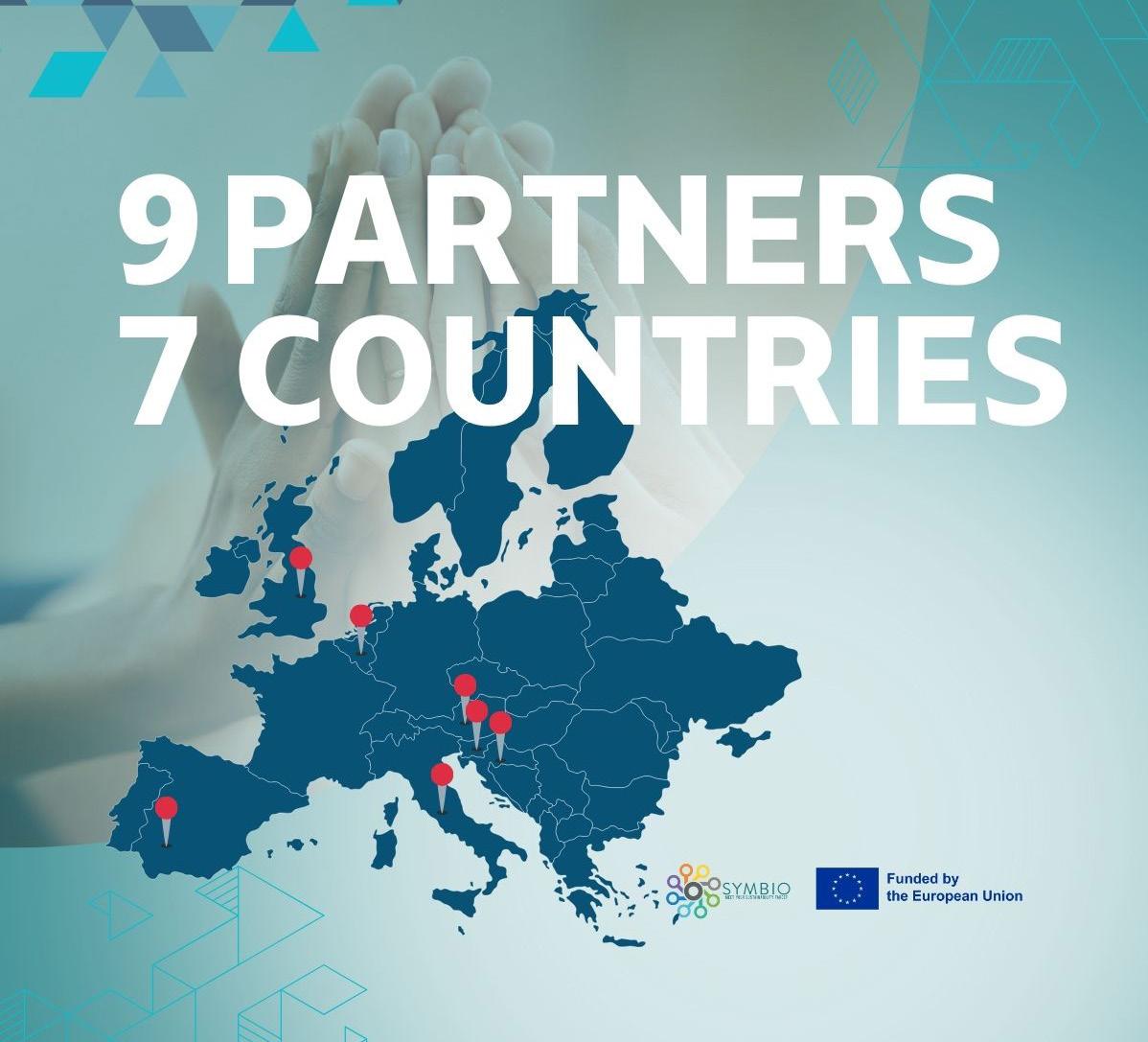
The global PLA market is projected to exceed USD 5.2 billion by 2030 as demand for biodegradable plastics accelerates (MarketsandMarkets, 2023). Similarly, glycerol, a versatile by-product of vegetable oils and fats, plays a central role across food, pharmaceuticals, cosmetics, and automotive sectors, with a global market expected to reach USD 5.1 billion by 2031 (Allied Market Research, 2023). Succinic acid, sourced from crop residues and sugarcane bagasse, is an indispensable intermediate for polymers, resins, and cosmetics, and the bio-based succinic acid market is projected to grow steadily, reaching USD 183 million by 2030 (Global Market Insights, 2025). Acetic acid, derived from lignocellulosic biomass, has wide-ranging applications in food preservation, textiles, cosmetics, and healthcare, within a global market worth over USD 21 billion in 2023 (Grand View Research, 2024). Even more strategically important is adipic acid, essential for nylon and polyurethanes, with a global market estimated at USD 5.5 billion in 2024 and growing due to demand for sustainable polymers (Fortune Business Insights, 2025).
In the field of biopolymers, PLA and polyhydroxyalkanoates (PHAs) illustrate the disruptive potential of circular materials. PLA is already established in biomedical devices, food packaging, and automotive interiors, while PHAs, produced from municipal solid waste, are emerging as high-value biodegradable plastics. Together, the global bioplastics and biopolymers market is projected to surpass USD 25 billion by 2030 (Research & Markets, 2025).
The portfolio also includes functional molecules with cross-sectoral significance. 1,3-propanediol, produced from glycerol or glucose, underpins polymers, coatings, adhesives, and cosmetics, lysine, an essential amino acid for animal feed, food fortification, and cosmetics, and Glutamic acid, widely used in food and pharmaceuticals. Furfural, derived from lignocellulosic biomass, is increasingly demanded as a renewable platform for resins, plastics, and agrochemicals, and finally, sorbitol, obtained from glucose, is a multifunctional additive for food, cosmetics, and pharmaceuticals.
By building business models around these twelve products, SYMBIO demonstrates not only their technological feasibility but also their economic, social, and environmental relevance. PLA and PHAs directly address the global plastic crisis by offering biodegradable alternatives, with significant implications for waste management and marine pollution. Glycerol and succinic acid strengthen industrial competitiveness by driving sustainable chemistry, while lysine and glutamic acid support agricultural and nutritional resilience. Furfural and sorbitol, meanwhile, open new industrial platforms with the potential to reshape global supply chains. The true innovation of SYMBIO, however, is that it goes far beyond product identification.
By the end of the project, ten zero-waste business models based on these twelve bio-based products will be evaluated and validated, integrating local biomass availability, technological feasibility, market potential, and policy frameworks. This will prove how industrial symbiosis can deliver concrete and scalable pathways to climate neutrality and economic resilience.
Through this validation process, SYMBIO ensures that solutions are not only experimental prototypes but also investment-ready strategies, capable of scaling from regional pilots into a fully integrated European bioeconomy.
Egon
Britzmann, MA BABEG | Kärntner Betriebsansiedlungs- und Beteiligungsgesellschaft m.b.H. britzmann@babeg.at www.babeg.at

European Commission. (2019). The European Green Deal. Brussels: European Commission, https://commission.europa.eu/publications/communication-european-green-deal_en
Joint Research Centre. (2024). Trends in the EU bioeconomy – update 2024. Publications Office of the European Union, https://data.europa.eu/doi/10.2760/0141556
MarketsandMarkets, (2023). Lactic Acid and Polylactic Acid Market by Application (Biodegradable Polymers, Food & Beverages, Pharmaceutical Products), Raw Material, Form (Dry, Liquid) and Region (North America, Europe, Asia Pacific, Rest of the World) – Global Forecast to 2028 https://www.marketsandmarkets.com/Market-Reports/polylacticacid-387.html
Allied Market Research. (2023). Glycerol Market, by Source (Biodiesel, Fatty Alcohol, Fatty Acid, and Others), Product (Refined Glycerin and Crude Glycerin), and End-use Industry (Personal Care, Food & Beverages, Pharmaceuticals, and Others): Global Opportunity Analysis and Industry Forecast, 2022-2031 https://www.alliedmarketresearch.com/ glycerol-market-A16434
Global Market Insights. (2025). Bio-Succinic Acid Market by Raw Material Source, End Use Industry, Manufacturing Process & Global Forecast, 2025 – 2034 https://www.gminsights.com/industry-analysis/bio-succinic-acid-market
Grand View Research (2024). Acetic Acid Market Size, Share & Trends Analysis Report By Application (Vinyl Acetate Monomer, Acetic Anhydride, Acetate Esters, Purified Terephthalic Acid), By Region (Central & South America, Europe), And Segment Forecasts, 2024 – 2030 https://www.grandviewresearch.com/industry-analysis/acetic-acid-market
Fortune Business Insights. (2025). Adipic Acid Market Size, Share & Industry Analysis, By Application (Nylon 6,6 Fiber, Nylon 6,6 Resin, Polyurethane, Adipate Ester, and Others), and Regional Forecast, 2025-2032 https://www.fortunebusinessinsights.com/adipic-acid-market-110336
Research & Markets, 2025. Bioplastics & Biopolymers Market by Type (Cellulosic Polymers, Polybutylene Adipate Terephthalate, Polybutylene Succinate), Application (Agriculture, Automotive, Consumer Goods), Source Material, Production Process - Global Forecast 2025-2030 https://shorturl.at/m7oru

JOANNEUM RESEARCH
The construction sector accounts for around 35 percent of global resource consumption and 40 percent of global CO₂ emissions. To counteract this, 32 partners are working on new technologies for a sustainable, digital and circular construction industry in the BMIMI-funded flagship project KRAISBAU. JOANNEUM RESEARCH DIGITAL is represented with innovative AI-based technologies for digital inventory management.
At the heart of KRAISBAU is the question of how existing buildings can be reused as effectively as possible – through conversion, refurbishment and intelligent renovation or resources. Using the example of a vacant school building in Salzburg, which is to be used as an innovation location in the future, new methods for the industry are being tested in practice.

A research team from DIGITAL, the Institute for Digital Technologies at JOANNEUM RESEARCH, is conducting comprehensive surveys of the building using visual sensor technology (3D measurements, hyperspectral sensor technology), thus providing a basis for decisions on potential uses.
Georg Thallinger, project manager at JOANNEUM RESEARCH, explains the procedure for taking inventory: "We use two different portable 3D scanners to capture the entire building, from the basement to the roof, under real conditions."
Read the whole article here.


The Latvian State Institute of Wood Chemistry is celebrating its 80th birthday next year, and one of the festive highlights will be the event “Knowledge Transfer & Cooperation” on 6 May 2026 at the institute’s Pilot-Scale Hangar, which provides an opportunity to up-scale laboratory processes developed at LSIWC or at the institute's cooperation partners, reaching TRL 4-6. At the event, guests are invited to visit the institute’s research facilities, meet up with LSIWC’s researchers, and discuss recent and future science-industry success stories in a merry atmosphere.
The event will be part of the International Conference for Young Scientists on Biorefinery Technologies and Products BTechPro2026.

Participants of the conference will have the exclusive opportunity to join in the celebration of LSIWC’s strong history in biomass conversion technologies and future perspectives for a knowledge-based bioeconomy.
Read the whole article here.
Contact
Kristine Meile
Latvian State Institute of Wood Chemistry kristine.meile@kki.lv www.kki.lv / www.btechpro.lv
RECENDT
The Research Center for Non-Destructive Testing GmbH (RECENDT) is a leading Austrian research institute at the forefront of innovation in inline-capable sensor technologies and non-destructive testing (NDT). RECENDT covers the whole range from application-oriented fundamental research to the implementation of state-of-the-art sensing solutions for industrial applications.
RECENDT’s core expertise spans a wide range of technologies, applicable for practically all industrial branches, medical research and diagnostics, and materials and process development.
These non-destructive sensing technologies enable inline, contactless, and non-invasive inspection of processes, materials and components, making them ideal for modern production environments. RECENDT’s solutions are widely used in industries such as automotive, aerospace, electronics, and pharmaceuticals, where precision and reliability are critical.
Still we notice, that many – mainly smaller –companies and institutes are not aware of the huge benefits from applying NDT and of the developments and improvements in this field.
As a partner in the EU-funded SINOPES project (SINOPES – Ihr Netzwerk für Smarte Inline-Sensorik für die Produktion) under the Interreg Bavaria–Austria program, RECENDT brings its deep technical knowledge and practical experience to a cross-border initiative aimed at strengthening interregional networks and enhance production efficiency in the Ba -
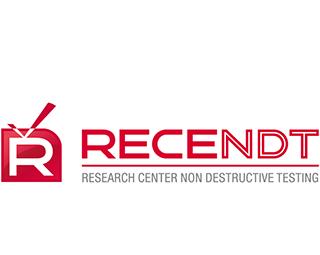
varia–Austria border region through advanced sensor technology.
The SINOPES project is building a network focused on inline-capable measurement and testing technologies, with a particular emphasis on non-destructive testing (NDT). Network members include technology providers and technology users (manufacturing companies), research institutions, industrial clusters, and other stakeholders.
Read the whole article here.

Contact Robert Holzer
Research Center for Non-Destructive Testing GmbH (RECENDT) robert.holzer@recendt.at www.recendt.at
Iris Reingruber

Business Upper Austria – OÖ Wirtschaftsagentur GmbH iris.reingruber@biz-up.at www.biz-up.at
RESEARCH CENTER PHAR MACEUTICAL ENGINEERING GMBH
Nanopharmaceuticals play a crucial role in modern medicine by encapsulating and protecting drugs during delivery. However, current nanomanufacturing processes, characterized by time-consuming batch methods, pose challenges for scalability and process control during the transition from laboratory to large-scale production. Such limitations can alter the physicochemical properties of nanopharmaceuticals, influencing safety and efficacy.
The NanoFacT project (June 2022 to June 2025) addressed these challenges by developing a flexible continuous manufacturing platform that integrates bottom-up and top-down technologies. A key element was its strategic collaboration with the European Consortium for Continuous Pharmaceutical Manufacturing (ECCPM), led by Research Center Pharmaceutical Engineering GmbH (RCPE). This partner-

ship united leading institutions and companies from all over Europe, including Gattefossé, InProcess-LSP, Knauer, Microfluidics, Skyepharma, RCPE and the University of Graz—enabling collective progress in advancing complex nanopharmaceutical manufacturing and generating fundamental knowledge for the field.
Read the whole article here.
Contact Carolin Tetyczka
Research Center Pharmaceutical Engineering GmbH carolin.tetyczka@rcpe.at www.rcpe.at / www.eccpm.com
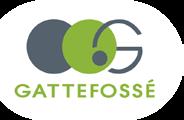




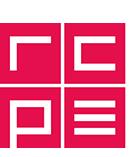



In the ERC project HelixMold, a team from Graz University of Technology (TU Graz) developed a method for the computer-based design of artificial proteins, with a focus on custom biocatalysts for pharmaceutical applications or the degradation of biopolymers.
“Imagine a future in which you can design enzymes — nature's catalysts — for your specific application at the push of button,” says
Gustav Oberdorfer, who headed the ERC Starting Grant project ‘HelixMold’ at the Institute of Biochemistry of the TU Graz. Devising a broadly applicable method for the computational design of non-naturally occurring proteins with specific characteristics – this was the general objective of the project.
Now, at the end of the project, Gustav Oberdorfer and his team have achieved their goal, laying the foundation for significantly

more specialised, faster and more precise design of proteins for various applications, including biocatalysts for the degradation of polymers such as cellulose, and the production of active ingredients for pharmaceuticals.
Read the whole article here.
Contact Gustav Oberdorfer TU Graz | Institute of Biochemistry gustav.oberdorfer@tugraz.at www.tugraz.at
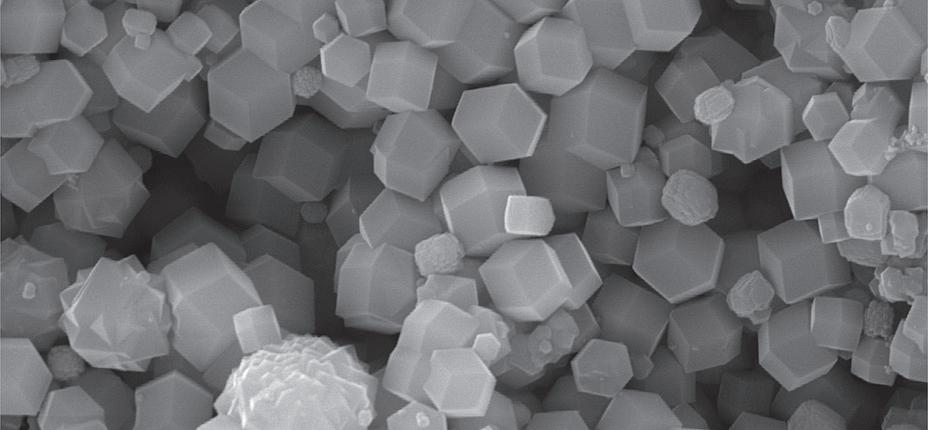
GRAZ UNIVERSITY OF TECHNOLOGY
An international research team involving TU Graz has developed flexible MOF films that can bind and release carbon dioxide (CO₂) based on light and temperature stimuli – a promising approach for future climate protection technologies.
An international consortium has taken a significant step toward developing scalable, lowenergy solutions for carbon capture and storage using metal-organic framework (MOF) films that can reversibly adsorb and release carbon dioxide under mild conditions— triggered only by changes of light and temperature. This could represent a key point to meet carbon neutrality goals.
The study, conducted by an interdisciplinary team that included scientists from the research infrastructure consortium CERIC-ERIC, Elettra Sincrotrone Trieste, Graz University of

Technology (TU Graz) and the Istituto Officina dei Materiali (IOM) of the National Research Council of Italy (IOM-CNR), has been recently published in Nature Communications.
Read the whole article here.
Contact Sumea Klokic TU Graz | Institute of Inorganic Chemistry
sumea.klokic@tugraz.at www.tugraz.at
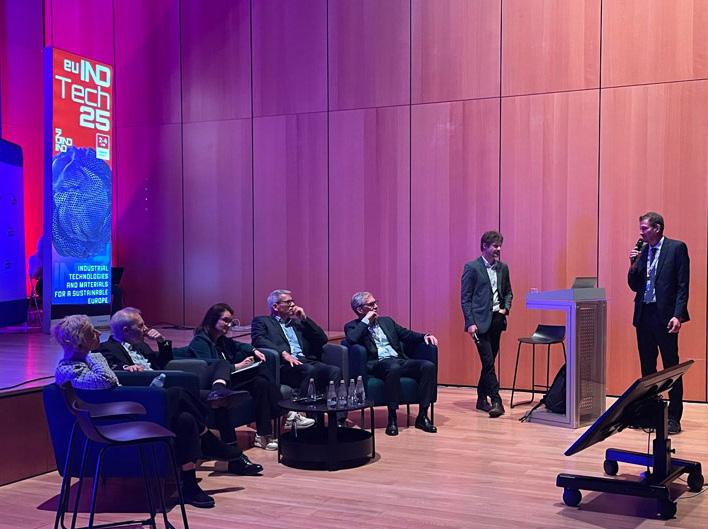
Within the last 3 months, ATIMA and its partners have continued their activities for raising awareness of the project and its goals, engaging with different stakeholder groups, and strengthening the identity of Austria’s advanced/innovative materials (AdMa) community.
Highlights of activities in this time period include:
02-04.06.2025, Krakow, Poland (BNN)
During the IndTech2025 conference, ATIMA was represented by coordinator Andreas Falk (BNN), hence bringing the Austrian advanced/ innovative materials community to the core of the European research and innovation community. Discussions with high-level experts in the AdMa-field and collaborating with the NSC Community, the EU-funded project InnoMatSyn, as well as the SusChem-ecosystem made it an efficient and valuable conference. More details about the event here.
04.06.2025, Krakow, Poland (BIZ-UP, BNN)
A2LT co-hosted the pitching webinar for the Eureka Network Lightweighting Call 2025 to -
gether with the FFG Austrian Research Promotion Agency. A total of nine project ideas from six different countries were presented, providing an overview of current international activities in the field of lightweighting. In addition, A2LT contributed to the World Café, where strategic topics such as the establishment of a European PhD network for lightweighting experts and the further development of the ELN network were discussed. These formats help shape the future direction of research and policy in the field of lightweighting.

Shaping the future: Training and further education as the key to competitiveness in additive manufacturing"
04.06.2025, Krakow, Poland (BIZ-UP, BNN)
The 5th European Lightweighting Network (ELN) Conference took place in Kraków, bringing together policymakers, researchers, and industry leaders from across Europe to discuss the contribution of lightweighting technologies to the European Green Deal. Over two days, participants engaged in presentations and strategic discussions on innovation, sustainability, and future collaborations in the field. With the topic “Lightweight materials technology impact on European Economy”, coordinator Andreas Falk (BNN) represented Austria and the Austrian AdMa community in a panel discussion, together with other European experts, such as Christian Olsson (Vice Director of LIGHTer—a strategic innovation programme, and program manager of RISE Research Institutes of Sweden, representing Sweden) and Werner Loscheider (Federal Ministry for Economic Affairs and Energy, representing Germany).
The event was full of high-level policy statements, focusing on the importance of Lightweighting Materials in Europe.
Network meeting with focus on "Shaping the future: Training and further education as the key to competitiveness in additive manufacturing"
05-06.2025, Linz, Austria ( AM-Austria)
On 5–6 June 2025, AM-Austria hosted a network meeting in Linz, Austria, under the theme “Shaping the Future: Training and Further Education as the Key to Competitiveness in Additive Manufacturing”.
Around 25 participants from both industry and academia came together to explore how education and skills development can strengthen the sector’s long-term success. The event fostered lively discussions and knowledge exchange, complemented by a tour of the LIT Factory, which offered participants exciting insights into practical applications of additive manufacturing.
The meeting also opened its knowledge-sharing offer to the ATIMA community, underlining the importance of collaboration. Setting common goals and driving further development are central ambitions for ATIMA, reinforcing the role of continuous training as a foundation for competitiveness and innovation in additive manufacturing.
16.06.2025, Linz, Austria (BIZ-UP)
The Medical.Materials 2025 event in Linz brought together over 50 experts from industry, research, and development to explore advanced materials for the medical sector, additive manufacturing, and regulatory requirements. Organized by the Medizintechnik- & Kunststoff-Cluster, the event provided an excellent platform for networking and
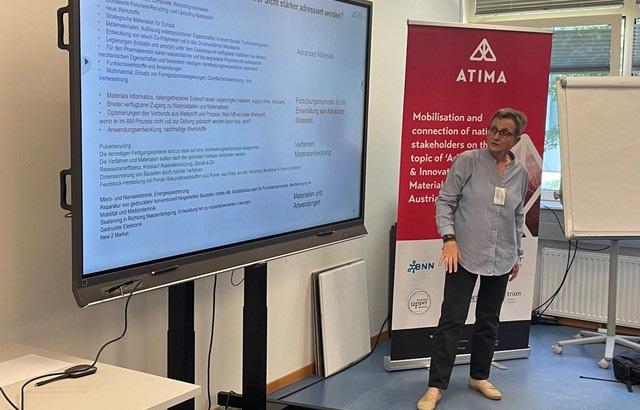
Dr Brigitte Kriszt, Montanuniversität Leoben, during her presentation.

knowledge exchange across disciplines. Highlights included innovative 3D printing applications presented by alphacam Austria, such as patient-specific anatomical models for surgical planning, medical moulages, and implantable bone models using PolyJet technology. WAKO GmbH and WESTCAM showcased AI-supported design methods for implants and orthoses, including titanium implants produced via EBM technology.
The ATIMA project was presented on-site with a dedicated roll-up display, further strengthening its visibility within the medical materials community. Additional presentations covered animal-free testing methods (OFI), biocompatible and biodegradable materials (Resorbink FlexCo), and the potential of bioceramics (TU Wien). Regulatory challenges under MDR and IVDR, particularly for patient-specific medical devices, rounded off the program.
„Grüne Chemie – Zukunft:Chemie“
17.06.2025, Vienna, Austria (BNN)
As part of ongoing efforts to strengthen Austria’s advanced/innovative materials (AdMa) ecosystem, ATIMA participated in a high-level, interactive networking event focusing on the green chemistry sector and its key the -
matic areas, including regulatory frameworks, economic implications, research, training, and innovation.
The event provided a valuable platform for knowledge exchange and stakeholder engagement. Andreas Falk (BNN) represented ATIMA at the event, using the opportunity to introduce the project, its core objectives, and the broader vision for Austria’s AdMa community. A key goal of ATIMA’s participation was to establish contact and initiate dialogue with key institutional stakeholders, most notably the Federal Ministry of Agriculture, Forestry, Regions and Water Management (BMLUK). A dedicated meeting was also held with Barbara Wetzer from the Environment Agency Austria (UBA) to explore synergies and potential future collaborations e.g., for a joint event on 26th November 2025 in Vienna.
This event marked an important step in building strategic relationships and expanding the project’s visibility within national regulatory and research landscapes.
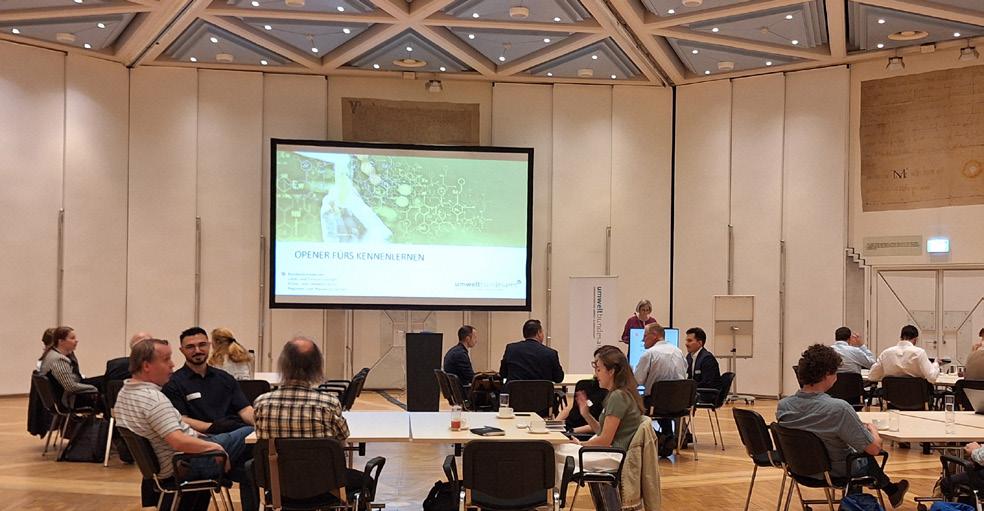
25.06.2025, Kapfenberg, Austria (BIZ-UP)
The 44th A2LT Plenary Meeting took place at the newly opened High-Tech Park of Pankl Racing Systems in Kapfenberg. Despite the summer heat, the program was packed with engaging content and lively discussions. Highlights included the presentation of the ELCA European Lightweight Cluster Alliance and its benefits for A2LT members, insights into the EUREKA Lightweighting Call 2025, and expert talks on topics ranging from lightweight engineering practices in design offices to innovative aluminum casting techniques and Polymer Stir Welding for hybrid material connections. Participants also enjoyed an exclusive tour of the aerospace facility and the Pankl Academy. The event once again underlined the importance of knowledge exchange and networking within the lightweighting community including the topic of advanced materials.
cations
20.08.2025, Alpbach, Austria (ASMET)
This year's Materials Workshop took place on 20 August 2025, in Alpbach, Austria. The event was organized by ASMET with the support of BMIMI, Joanneum Research, and MCL. Since 2013, the workshop has served as a central forum for the exchange of ideas among researchers, industry professionals, and policymakers in the field of metallic materials. During the workshop, the Austrian materials community discusses forward-looking questi -
ons and defines and proposes R&D needs.
The 2025 Materials Workshop was supported by the FFG-funded ATIMA (Advanced and Innovative Materials Austria) project. As the ATIMA project also addresses these issues, the workshop is expected to provide decisive impulses for the further development of metallic materials. The workshop focused on the theme "AI Applications in Materials Development and Production". The goal was to discuss current artificial intelligence (AI) developments in materials science, explore potential applications in research and industry, and derive new R&D priority recommendations for policymakers and funding institutions. Following the opening remarks by Alexander Pogány (BMIMI) and Bruno Hribernik (ASMET), there was a series of eleven keynote presentations on AI and other topics. During the second half of the workshop, participants worked in three breakout groups—Materials Development & Simulation, Process Development in Production, and Education & Training for AI Applications— to identify concrete research needs, necessary framework conditions, and opportunities for cooperation.
The workshop made it clear that, although AI technologies are already being applied in materials development and production, there is still a significant need for further research and development. The necessity of test platforms, digital twins, and training programs was emphasized. With 35 experts from research, industry, and government in attendance, Alpbach once again proved to be a place where ideas for the future of materials research emerge.

Attendees of the Materials Workshop Alpbach 2025
Kick-off of the new Working Group “AdMa4AM”
26.08.2025, Wiener Neustadt, Austria (AM-Austria, ASMET, BNN)
The new working group “Advanced Materials for Additive Manufacturing” (AdMa4AM), initiated by AM-Austria as part of the activities for the ATIMA project, has set itself the goal of bringing together experts from industry, research, and associations to drive the development and application of innovative materials for 3D printing and related manufacturing processes.
The group officially launched on 26 August in Wiener Neustadt, Austria, with an extremely well-attended kick-off event that attracted strong interest from participants—highlighting both the relevance and urgency of this topic.
The importance of this initiative was further underlined by the participation of the Federal Ministry for Innovation, Mobility and Infrastructure (BMIMI), represented by Alexander Pogany, who emphasised the central role of advanced materials in the future of manufacturing.
Additive manufacturing is widely recognised as a key technology for the production of the future. While machines and processes are crucial, materials are at the heart of innovation. From high-performance metals and polymers to multifunctional composites, advanced materials open up vast opportunities—both for large-scale production and highly specialised applications.
The working group provides a platform for knowledge exchange, identification of common challenges, and the development of practical solutions. The successful kick-off event marks the starting point for intensive dialogue and collaboration among stakeholders across the entire value chain.
Coordination, Roadmap development, AdMacommunity building, international representation, Communication & Dissemination.
Contact
Clemens Wolf
BioNanoNet Forschungsgesellschaft mbH info@atima.at www.atima.at


The FFG is the central national funding organisation and stren thens Austria’s innovative power. This project is funded by the FFG, project n° FO999919580.

Mr
RHP-Technology, during his welcome speech.

Advanced/innovative materials (“AdMa”) are described by the European Union as “engineered materials with innovative properties and functionalities” with the objective to achieve specific or improved functional performance. AdMa are proving to be game changers in areas from energy to mobility to health.
The EU-funded project InnoMatSyn is bringing together AdMa-experts across Europe and has recently launched its website, informing stakeholders and the general public about the project ambitions, as well as providing the opportunity for stakeholders to take an active role and engage in the AdMa ecosystem.
Coordinated by BNN with 14 beneficiaries, InnoMatSyn seeks to create synergies of regional, national and European initiatives for AdMa to boost their impact, in support of the development of safe and sustainable materials. The consortium receives 4 million Euros in EC-funding to execute the project within the next 3 years.
The project will provide an interconnected materials ecosystem, AI-based knowledge repository, technology leakage risk assessment, and support for joint funding calls. As of the launch of the project, InnoMatSyn has received a great deal of support from stakeholders from all over Europe.
InnoMatSyn has set the following objectives:
• Synergetic connecting of regional, national and European (funding) initiatives (e.g.: s3, ERA.NETs, national funding bodies, partnerships, EITs, etc.) in the field of “Advanced/Innovative Materials”.
• Development of technology leakage risks assessment guidelines and implementation support for member states.
• Development of knowledge about competences, projects (calls, results), publications, Materials Commons, etc., and knowledge transfer.
• Development of a sustainable European Research-, Development- and Innovation-Ecosystem in the field of Advanced/Innovative Materials.
Project coordinator Andreas Falk of BNN is calling on all stakeholders active in the AdMa environment (e.g. scientists and researchers, funding organisations, financing agencies, companies, technology platforms, etc.) to get directly involved and take the first step by registering as an AdMa stakeholder on the innomatsyn.eu website under “Contact”. Together with the InnoMatSyn consortium, a large number of innovative initiatives can be realised.
Register yourself and/or your initiative (company, funding body, project, etc.) directly here.
Engage with InnoMatSyn in person!
We are busy preparing for in-person events as well. Save the date for back-to-back workshops for the Future of Advanced Materials in Europe (FAME), held afterward, from 26-28 November, in Aveiro and Porto, Portugal.
In the new year, we will be welcoming AdMa
players to a stakeholder workshop in Bilbao on 12 February 2026.
Check out the InnoMatSyn website for more information, coming soon!
BNN is project coordinator of InnoMatSyn, providing key connections to Austrian AdMa related National Technology Platforms. In addition, BNN leads Communication & Dissemination and Stakeholder Engagement activities, as well as Safe-and-Sustainable-by-Design and standardization activities.
Andreas Falk, Johanna K. Scheper, Christine Halbedel Coordination team of InnoMatSyn BioNanoNet Forschungsgesellschaft mbH info@innomatsyn.eu www.innomatsyn.eu


InnoMatSyn project has received funding from the European Union’s Horizon Europe research and innovation programme under grant agreement 101204218. Views and opinions expressed are however those of the author(s) only and do not necessarily reflect those of the European Union. Neither the European Union nor the granting authority can be held responsible for them.
NABIHEAL is an EU-funded project developing multifunctional biomaterials to improve wound-healing management. Within this exciting project, BNN is responsible for communication and dissemination, as well as implementing the Safe-and-Sustainable-byDesign (SSbD) approach into the development process. BNN Innovation Manager Johanna K. Scheper and her team have been contributing to this task. We sat down with them to understand how BNN is integrating SSbD into this project.
Johanna, you and your team are the experts for Safe-and-Sustainable-by-Design within NABIHEAL. Can you explain to those unfamiliar with SSbD what this concept means and why it’s so important?
In a very simplified way, SSbD means checking aspects of safety and sustainability early on in the development stage of a product or material, even if they are beyond regulatory necessities. SSbD permits us to improve novel and innovative materials by providing the tools for making optimal decisions among all possible options. SSbD can also be used to redesign existing materials or chemicals. If one adheres to the principles of SSbD and uses them as key
performance indicators (KPIs) in the design or redesign phase, one comes closer to ensuring that no harmful material or chemical will be launched into the market or fail before launch due to safety issues.
At what point should a company or research group start informing themselves about SSbD? When is it too late?
Since SSbD is still gaining visibility, I would say it is never “too late”. Better late than never to think about safety and sustainability! However, incorporating changes late in the developmental process can be very costly, so making those changes and decisions early on can be very helpful for you economically as well. The best case scenario would be to consider SSbD once your idea has been formulated – or even before, since it takes some time to familiarize oneself with the concept and to make sure it can be applied appropriately. Once a harmful material or chemical has reached the market, though, it truly is too late – and that is exactly what SSbD wants to prevent!
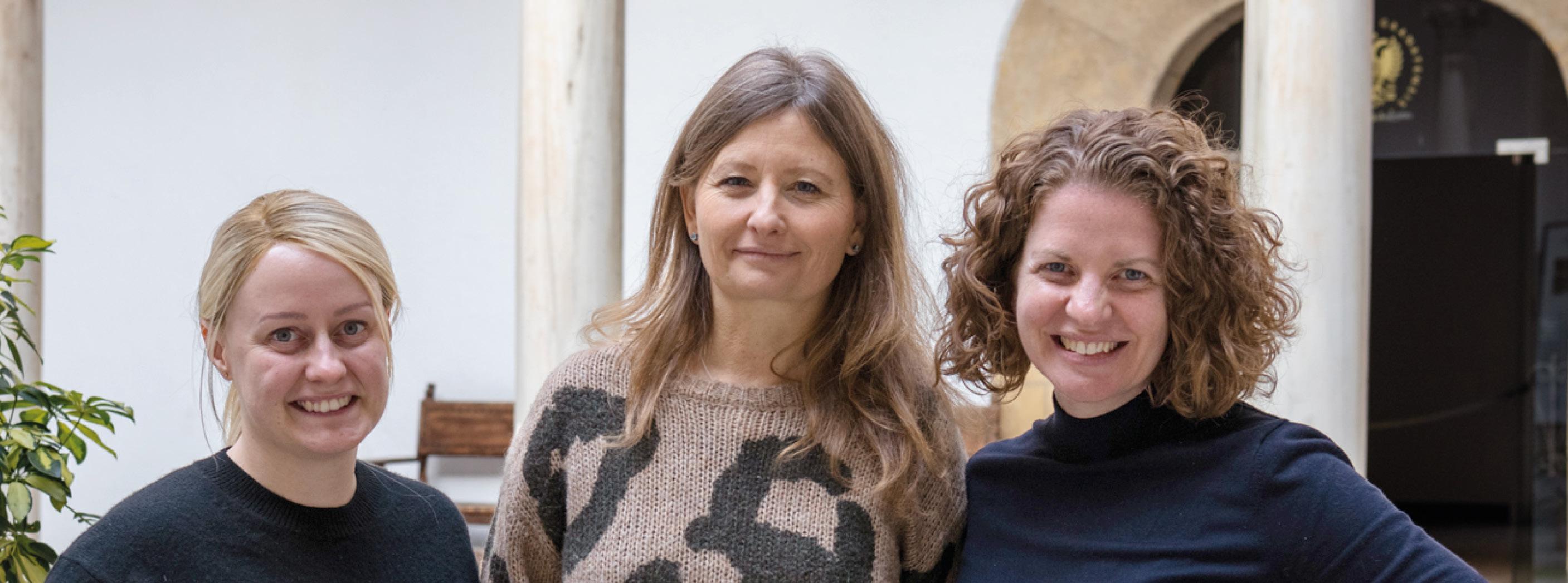
Tell us about how the SSbD approach is being implemented in NABIHEAL.
In NABIHEAL we created a tailor-made questionnaire, fitting to the needs of this project. This questionnaire was filled out by the project partners, with the support from BNN in regard to the materials they are producing or to their location, which is relevant for social aspects, for example. The questionnaire is structured in 5 different steps, largely following the SSbD Framework defined by the Joint Research Centre of the European Commission . Step 1 addresses inherent hazard characteristics of all the materials and chemicals used and developed within the project. Step 2 targets safety aspects during the processing and production phase of the materials. Step 3 covers the use phase. Step 4 deals with general sustainability aspects. Finally, Step 5 addresses socioeconomic aspects.
NABIHEAL is creating a wound-healing dressing that will be classified as a medical device. How do you measure whether a medical device is safe and sustainable
“enough”? Are there any requirements set?
Regarding safety the basic measures that have to be taken and information that has to be provided is regulated by the current medical device regulation in place. However, the regulation does not cover sustainability in detail. So, incorporating SSbD into the development of a medical device is very future-oriented thinking. In my opinion, it is very worthwhile to benefit the producers, patients and future generations. Using the example of COVID-19 antibody tests, for example – if producers had considered sustainability (in terms of waste separation, biodegradability, etc.) from the beginning of the design process, we could have minimized the enormous amount of waste produced.
How do you think having the NABIHEAL wound-healing biomaterials be Safe-and-Sustainable-byDesign will have an impact (e.g. socially, economically, etc.)?
Considering that current products on the market have not taken sustainability aspects or social aspects into account, I think NABIHEAL will be able to provide a functional and more ethical option in terms of environmental and social aspects. By replacing silver or other potentially harmful and toxic materials in dressings, we would reduce the ecological burden posed by wound care materials. We also hope to make the production more cost-effective, alleviating the financial burden on affected individuals and the health care system. Since the production processes are also under evaluation, we aim to contribute to decreasing negative impact on climate and decreasing the carbon footprint.
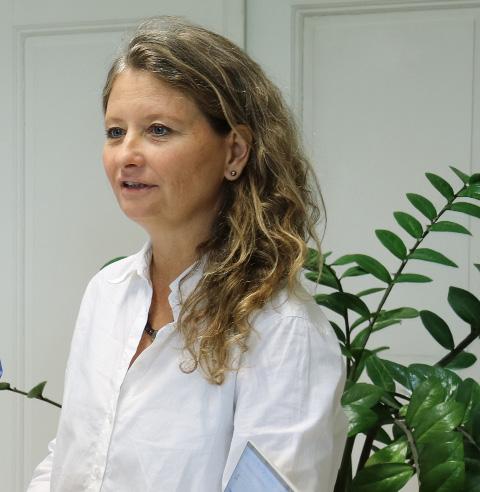
In which other sectors does BNN help companies with SSbD?
BNN covers a very broad area of projects in which SSbD can be applied. We have been involved in projects from the medical sector, such as NABIHEAL or also DeDNAed, which aimed at developing a biosensor. However, we work on projects focussing on surfactants, flame retardants, battery components or various bio-based materials. One key competence of BNN is in the field of advanced/innovative materials (AdMa), which are more challenging than classic chemicals when it comes to safety and sustainability assessments. This is because their properties can change dramatically depending on their surroundings.
Role of BNN in NABIHEAL:
SSbD concept & guidelines, Dissemination, Communication & Stakeholder Involvement.
Contact Johanna K. Scheper johanna.scheper@bnn.at nabiheal.eu


This project has received funding from the European Union’s Horizon Europe research and innovation programme under grant agreement no. 101092269. Views and opinions expressed are however those of the author(s) only and do not necessarily reflect those of the European Union. Neither the European Union nor the granting authority can be held responsible for them
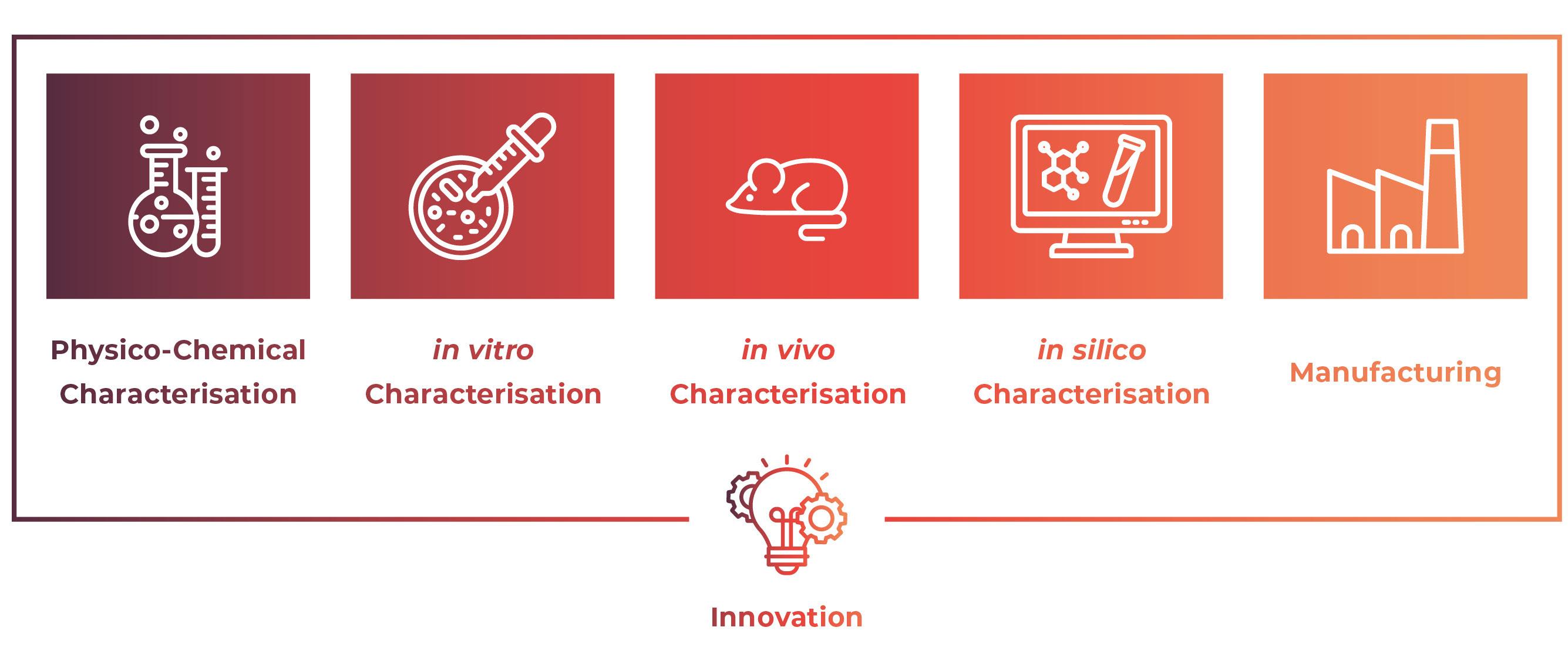
Nanopharmaceuticals represent a rapidly advancing frontier in modern medicine, offering novel therapeutic solutions by leveraging the unique behaviors of materials at the nanoscale. Unlike conventional drugs, nanoformulations harness the distinct physical, chemical, and biological properties that emerge when particle sizes are reduced to the nanometer range. These differences—especially in terms of pharmacokinetics, biodistribution, and efficacy—require an equally specialized approach for development, characterization, and manufacturing.
However, translating these promising innovations from the research bench to clinical and commercial application remains a significant challenge for biotech and pharmaceutical companies, especially start-ups and SMEs.
Scaling up nanoformulations, ensuring consistent quality, navigating GMP production, and meeting regulatory expectations demand not only scientific excellence but also access to the right infrastructure and expertise.
PHOENIX-OITB (Open Innovation Test Bed) was established to bridge this gap—offering an integrated, end-to-end ecosystem that accelerates the development and industrialization of nanopharmaceuticals. Through its Single Entry Point (SEP), PHOENIX enables seamless access to a consolidated network of facilities, technologies, and expert services. From early-stage R&D to GMP manufacturing and innovation and regulatory support, PHOENIX is designed to streamline every stage of the product journey—saving time, reducing risk, and ensuring quality.
Within this project, BNN co-developed the PHOENIX-OITB Service Portfolio, reflecting the evolving capabilities of our network. It includes:
• A comprehensive overview of available services, both in non-GMP (R&D, preclinical and scale-up) and GMP (manufacturing) environments.
• Technical specifications and access conditions for each service.
• 6 service categories: physico-chemical characterization, in vitro characterization, in vivo characterization, in silico characterization, manufacturing, and innovation.
• Updated offerings based on real-world experience from demo cases and Open Call collaborations.
BNN is proud to offer a broad range of innovation-related services:
• SSbD consultancy, guidance and implementation: This service is a pre-market approach to chemicals and materials that focuses on providing a function, while avoiding volumes and chemical/materials properties that may be harmful to human health or the environment.
• Support in business-related aspects: Generating a business model and business plan, developing and creating business cases.
• Regulatory services for pharma: Ranging from medical writing, to Orphan Drug Designation, to early interactions with regulators and creation of a regulatory and development roadmap – under MDR/IVDR.
• Training: On safety, sustainability and latest regulatory updates in the nanomedicine field.
Within the Open Call activities of PHOENIX, BNN elaborated a regulatory roadmap for the development of one of the Open Call winners’ products and also prepared and conducted an interaction with the national regulatory authority to validate a development plan for related disease treatment.
A searchable digital version of this portfolio will be available through the PHOENIX SEP website, ensuring transparency and continued accessibility for innovators, researchers, and commercial partners.
View the results of PHOENIX-OITB here: https://www.phoenix-oitb.eu/demo-cases/
View the PHOENIX-OITB Service Portfolio here: https://www.phoenix-oitb.eu/phoenixoitb-services/
Contact
Daniel Garcia daniel.garcia@bnn.at


PHOENIX project has received funding from the European Union’s HORIZON 2020 research and innovation programme under grant agreement n° 953110.

The EU-funded project PLANETS has created a carefully curated collection of essential terms and their meanings to facilitate the understanding and deepen the use of terms in the context of the PLANETS SSbD approach.
It aims to share the SSbD vocabulary with case studies and between SSbD experts. It contains more than 80 terms dealing with SSbD, Safety, Hazard, Exposure, Environment, Economic and Social aspects that could be indicators, tools, or methods…
The wordbook is publicly accessible here.
Role of BNN in PLANETS project: SSbD, Communication & Dissemination, Stakeholder Engagement, Graphic Design and Training
Contact
Beatriz Alfaro Serrano beatriz.alfaro@bnn.at www.project-planets.eu


PLANETS has received funding from the European Union’s Horizon Europe research and innovation programme under grant agreement n° 101177608. Views and opinions expressed are however those of the author(s) only and do not necessarily reflect those of the European Union. Neither the European Union nor the granting authority can be held responsible for them.
PLANETS aims to demonstrate the applicability of the SSbD Framework while technically developing alternatives for 3 of the most important classes of molecules in chemical industries (plasticizers, flame retardants and surfactants) at TRL 6 and their incorporation into broadly available consumer goods at TRL7. The new molecules and products will be significantly safer for workers and consumers and will have considerably lower environmental impact, while ensuring economic viability and social awareness throughout the 3 value chains.
Additionally, PLANETS is very active in organising internal trainings and adapting the materials for external users!
Explore their publicly available materials here :
• Safe-and-Sustainable-by-Design (SSbD) scoping: SSbD policy background, basics, actions of scoping, the PLANETS SSbD workflow, as well as practical exercises
in break-out groups on system boundary definition
• SSbD Tier 1 assessment: theory, application and adaptation
• Conducting a SSbD Tier 2 assessment using QSAR modelling
• Introduction to FAIR data & models, and Digital Product Passport (DPP)
Contact Beatriz Alfaro Serrano beatriz.alfaro@bnn.at www.project-planets.eu

On 23 June 2025, the NSC Working Group on Safe and Sustainable by Design (SSbD), Innovation & Regulation organised an online workshop on “SSbD scenarios for advanced and incremental innovations” as a collaboration effort among several EU-funded projects: AlChemiSSts, DESIDERATA, PLANETS and SUNRISE.
Not all innovation scenarios in SMEs and industry are the same. Current JRC SSbD guidance and also the Portfolio Sustainability Assessment (PSA) / Cefic concepts leave room for tailoring the SSbD approach within a tiered framework. Scenarios support the tailoring, such that SSbD is not just another burden, but increases overall competitiveness.
But how should a SSbD scenario be described? This was exactly the aim of this first workshop.
The workshop tested aspects that described a scenario by knowledge that is available at early innovation stages with real-world cases kindly provided by innovators from the projects AlChemiSSts, DESIDERATA, PLANETS and SUNRISE. Shortlisted aspects included the professional environment (start-up, SME or industry), the sector of application (B2B vs B2C), the innovative height (incremental or advanced), R&D project budget, and other aspects that would be known to the innovator before starting any lab work.
Danail Hristozov (Green Decision, and chair of the NSC WG on SSbD) opened the workshop and welcomed the more than 60 inter-
national participants from academia (56%), large industry (19%), SME (8%), consultants (11%), regulators (3%) and EU institutions (3%). Irantzu Garmendia Aguirre (European Commission Joint Research Center (JRC)), gave the JRC’s point of view in her talk on the SSbD Framework: Scenario building with the scoping analysis, where projects with different starting points and different development routes “climb to the summit of SSbDlead innovation”.
Wendel Wohlleben (BASF, and co-chair of the NSC WG on SSbD) presented the concept of the SSbD scenarios, setting the basis for the rest of the workshop, which continued with an introduction by Lya Soeteman-Hernández (RIVM, and co-chair of the NSC WG on SSbD) of the Case Studies break-out groups joined by the participants, where the methodology used in the different case studies was explained and discussed:
• AlChemiSSts case study: Cauchos Ruiz Alejos (represented by Mónica Martínez, from AVANZARE), on firefighter soles using safe alternatives to hazardous flame retardant additives
• DESIDERATA case study: Anastasia Moschovi, from MONOLITHOS, on geopolymers originating from mining waste as replacement of Aluminum in construction

• PLANETS case study: Stefan Haid, from WACKER, on binders for paint (where the surfactant used during synthesis chemical needs to be tailored to avoid byproducts)
• SUNRISE case study: Laurentia Technologies (represented by María Rivero García, from ITENE) on post-harvest fruit treatment based on safer microencapsulated oil
After a short break, Martin Himly (PLUS, and chair of the NSC WG on Training) moderated the joint reporting session of the different breakouts, where feedback was collected for redefining the questions.
The workshop concluded with Wendel Wohlleben and Carla Caldeira (SYENSQO) summarising the feedback collected and setting the next actions on:
• how to use the scenario described by information from SSbD scoping and from the business cases collected in the workshop for better tailoring the SSbD assessment;
• the need of further work in the clarity of some of the questions used to describe a scenario, based on feedback during the workshop;
• the need to involve industrial organisations (beyond those involved in EU-funded projects) in testing the SSbD tailoring via SSbD scenarios;
• the need to develop incentives for making industry implement SSbD in their processes.
Two main activities are planned as followups of this workshop: A second workshop, in Autumn 2025, distilling “archetypical SSbD scenarios” & their tailored SSbD approaches, and finally, a joint NSC publication on the demonstration by case studies by the involved projects, their SME innovators, industry innovators and SSbD experts.
Workshop materials:
• Workshop materials are publicly available in Zenodo: DOI: 10.5281/zenodo.15756155

We are excited to announce the launch of SbD4Skin, a powerful, user-friendly platform that predicts whether chemicals may cause skin irritation, allergies, or toxicity — without the need for animal testing.
By combining cutting-edge machine learning with diverse chemical data, SbD4Skin delivers highly accurate predictions while also highlighting the most important chemical features behind them. This means results are not only reliable but also transparent and easier to understand.
Role of BNN in SSbD4CheM: Communication & Dissemination, Stakeholder Engagement, Graphic Design and Training.
Contact
Beatriz Alfaro Serrano beatriz.alfaro@bnn.at www.ssbd4chem.eu

SSbD4CheM is an EU-funded Horizon Europe project working to introduce screening and testing methods for safe and sustainable material development in three relevant demonstrators: the textile, automotive and cosmetics industries. The project aims to meet the EU’s strategic objectives for digital, enabling, and emerging technologies, sectors, and value chains by developing a comprehensive Safe and Sustainable by Design (SSbD) framework that uses new science-based approaches to identify and address potential hazards and risks, and innovative technologies to support the design of safer and more sustainable products and processes.
Get to know one of our Work Package leaders. Stephan Wagner is Professor for Environmental Analysis at Fresenius University of Applied Sciences (Hochschule Fresenius) (Leipzig, Germany). Within SSbD4CheM, he is leading the work package on analytical methods for visualisation, characterisation, analysis and identification of particles and organic compounds in the materials and products of the project.
Tell us a bit about yourself. What is your area of expertise?
By training I am an environmental scientist with a focus on environmental analytics. Over the last ten years my research portfolio has expanded from environmental analysis to food, materials and consumer product analysis. My team and I develop new analytical approaches and apply them to the development of new technologies and risk assessment.
We work with organic and inorganic mass spectrometry techniques. I like this area because we work very close to the application and it allows a high degree of innovation.
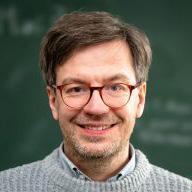
How does your specific work package “Analytical methods for tailored requests” contribute to the project?
Our work package is designed to support the Safe-and-Sustainable-by-Design (SSbD) approach for the three case studies in the project by providing new and fit-for-purpose analytical tools. We aim to develop innovative analytical tools for imaging, nano- and microparticle characterisation, volatile organic compound (VOC) analysis and identification of unknown organic compounds in the materials and products of the project case studies. In this work package, analytical research and industrial application are very closely linked. We drive analytical innovation by considering the analytical needs of the industry in our work package.
For example, we are developing and implementing mass spectrometry-based analytical detection techniques for VOCs and applying them directly to characterise VOC emissions from vehicle interiors using state-of-the-art emission test chambers. These tests provide exposure concentration data that will be used for safety assessment of the new materials in car interiors.
What is the most exciting thing about the activities in your work package?
We have been involved in many European and national projects where new analytical approaches have been developed. In SSbD4CheM, we want to not only develop and optimise new analytical approaches, but also apply them to the SSbD framework. Therefore, our partners are from research institutions and industry, which makes the work very exciting. For the next project period, we will also investigate the potential for harmonising our newly developed methods, which would make them applicable beyond the project.

Beyond these very practical considerations, SSbD4CheM brings together many great scientists working together to develop new tools and ideas that can support safe and sustainable materials and products.
Communication & Dissemination, Stakeholder Engagement, Graphic Design and Training.
From your point of view, who can benefit the most from the project?
The project is designed to benefit many interested parties. You could say that there are different target groups for SSbD4CheM.
I think that different stakeholder groups can really make the most of this project because it offers a lot of expertise and services. In particular, it allows new analytical approaches and concepts to be tested and to be put into practice. The methods used reach from classical analytics and hazard assessment to computational prediction tools, which will also pave the way for how we perform safe and sustainability assessments in the future.
It also serves as a very large pilot project from which industry not directly involved in the project can benefit. One example would be our efforts towards upcoming harmonisation of analytical methodologies.
Contact
Beatriz Alfaro Serrano beatriz.alfaro@bnn.at www.ssbd4chem.eu

This project has received funding from the European Union’s Horizon Europe research and innovation programme under grant agreement n° 101138475. UK participants in SSbD4CheM project are supported by UKRI. CH participants in SSbD4CheM project receive funding from the Swiss State Secretariat for Education, Research and Innovation (SERI).



On 11 June 2025, the SSbD4CheM project hosted a stakeholder outreach webinar titled “Practical Application and Case Studies in Industrial Safe and Sustainable by Design”. The webinar brought together researchers and industry experts for the project to explore the practical implementation of the Safe and Sustainable by Design (SSbD) framework, with a strong focus on real-world industrial applications.
Around 50 participants from different stakeholder groups (universities, research institutes, SMEs, large industries, etc.) joined the webinar, which highlighted how SSbD principles are being adopted across the chemicals and materials sectors, with a particular emphasis on the cosmetics industry. Through a series of engaging presentations, participants gained insights into both the scientific foundations and the practical challenges of putting SSbD into action.
Key highlights from the program included presentations from Milica Velimirovic (VITO), Assaf Assis and Ze’evi Ma’or (Ahava), Bar ry Hardy (Edelweiss Connect), Ondrej Panak (National Institute of Chemistry, Slovenia), Yvonne Kohl (Fraunhofer IBMT), Nils Thone mann (Leiden University), as well as BioNa noNet members Panagiotis Kolokathis (Nova Mechanics), who demonstrated how physicsbased materials modelling can support hazard
profiling by enhancing understanding of material properties at the molecular level, and Ivana Burzic (Wood K plus) who wrapped up the session with an overview on the project’s case study applications in automotive, textiles and cosmetics demonstrators, offering valuable insights into the practical implementation of SSbD in industrial settings and the, so-far, lessons learned from these real-world applications.
This webinar demonstrated the growing momentum behind SSbD, the crucial role of collaboration between academia, industry, and technology providers, and the role of the SSbD4CheM project.
Role of BNN in SSbD4CheM:
Communication & Dissemination, Stakeholder Engagement, Graphic Design and Training


BNN EVENTS & EVENTS SUPPORTED BY BNN

BioNanoNet Annual Forum: Efficient and Sustainable Industries and Production – Transferring Know-How to the Life Sciences Sector
7 October 2025 | Linz, Austria
Join us for the BioNanoNet Annual Forum 2025, where innovation meets application! This year’s event will showcase how advanced technologies and sustainable industrial practices are being translated into the life sciences sector. Taking place in Linz, the event will include tours to co-hosts RECENDT, Wood K plus and CHASE. Members and non-members alike are encouraged to participate in the life science session, SSbD session and networking pitches.
Register here by October 2nd!
The BioNanoNet community is invited to attend the 3rd Austrian Life Science Day, on 8 October 2025, from 9:30-17:00 (back-toback with our BioNanoNet Annual Forum) at the Schloßmuseum in Linz. Look forward to high-profile keynote speeches, surprising best practice examples and valuable ideas for implementation in your company or healthcare facility. 3rd Austrian Life Science Day is organised by the Upper Austria Medical Technology Cluster, with support from Life Science Austria (LISA), Human.Technology.Styria, Innovation.Salzburg, LISAvienna, ECOplus and the Standortagentur Tirol.
The 1st SENTIATECH Congress: Detection, Measurement and Control of Emerging Risks is one of the most important European events in the field of the development of robust solutions for the early detection, measurement and control of emerging chemicals, pathogens and contaminants, as well as the development of new safe and sustainable chemical products.
This year’s edition of the NanoTrust Conference will center on the Safe-and-Sustainable-by-Design (SSbD) framework. Three sessions will explore the latest advancements of the SSbD approach, developed by the Joint Research Centre of the European Commission. The program will also highlight national initiatives supporting SSbD in the European Union, as well as its application in EU-funded projects and industrial practice.
The event brings together leaders from across Europe to shape the future of Research and Technology Infrastructures to support European competitiveness. The summit will provide key input for the implementation of the new European strategy and demonstrate how the infrastructures drive innovation, science, and industry forward. BNN will be present with the project InnoMatSyn.
SSbD25 Conference
November 2025 | Zurich, Switzerland
Welcome to the second edition of the yearly SSbD conference, where researchers, industry and policymakers meet to discuss topics related to Safe-and-Sustainable-by-Design. This year’s edition takes place on the 10th12th of November in Zurich, Switzerland, at the Empa Akademie.
2nd NSC workshop on SSbD scenarios
5 December 2025 | Online
Following on from the first NSC workshop “SSbD scenarios for advanced and incremental innovations” on 23 June, the NSC Working Group on SSbD will organise a second workshop, where they will present “archetypical SSbD scenarios” and their tailored SSbD approaches!
Zukunftstag 2025
With the theme “Global minds, local moves,” relevant players from business and science gather in Graz to shape the future together –in Styria and beyond.
ANTHOS’26 – Advanced (Nano)Materials and Technologies: From Needs to Solutions
Following the successful ANTHOS’24, the second edition of this event driven by BNN, supported by the NSC Community and EU-funded projects, is taking place on 9-11 March 2026 in Vienna. Save the date, block your calendars and stay tuned for more information soon! Special thanks to all the engaged and collaborative projects co-organising this impactful NSC event: AI-TranspWood, Alchemissts, BIOSAFIRE, CheMatSustain, InnoMatSyn, INTEGRANO, PINK, PLANETS, SSbD4CheM, SUNRISE, TOXBOX!
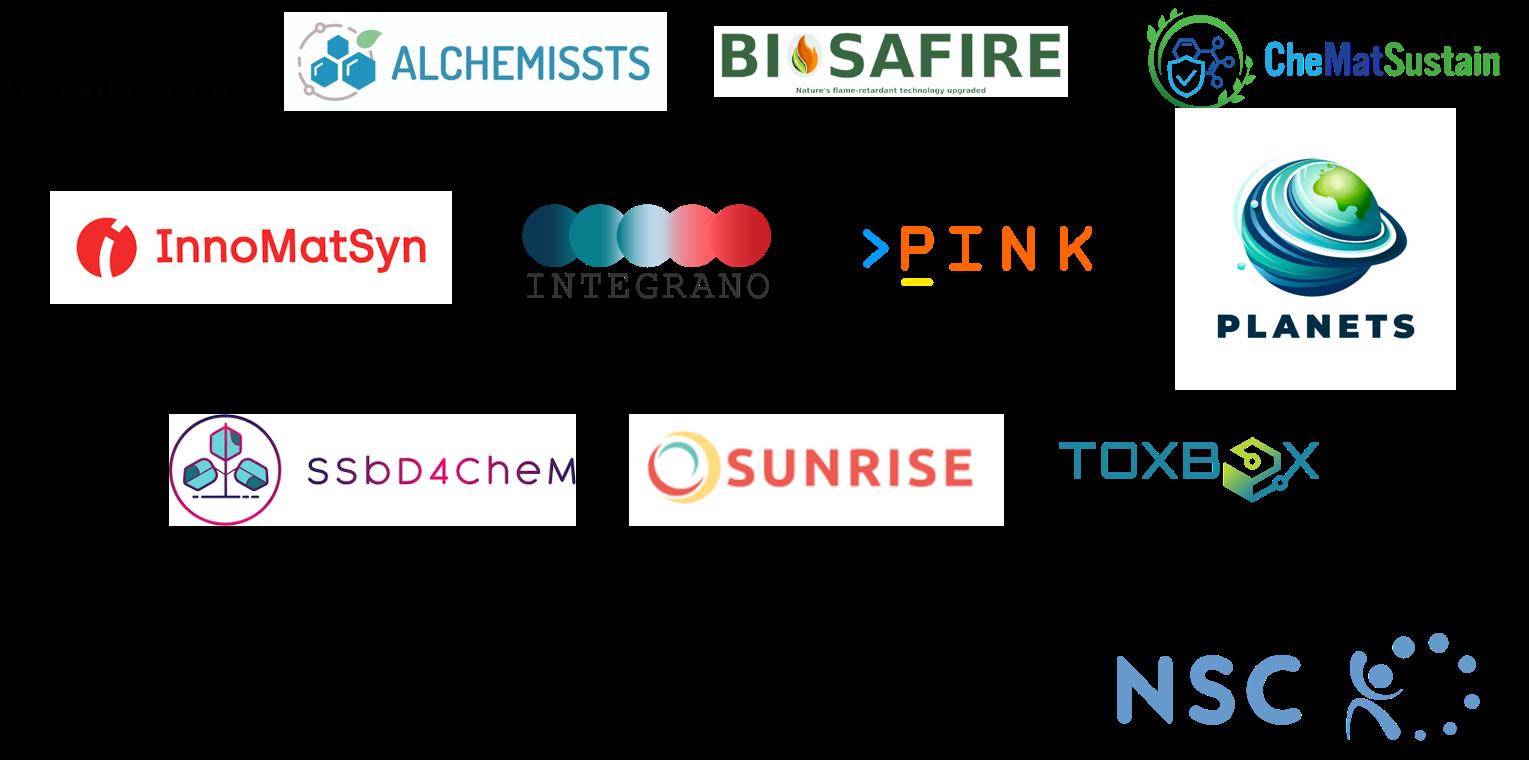

FAME: Future of Advanced Materials in Europe & FAME-EcoSys
26-28 November 2025 | Aveiro, Portugal
From 26-28 November 2025, the advanced/innovative materials (AdMa) community will gather in Portugal for a series of workshops relating to the AdMa ecosystem in Europe and its future. The first workshop is focused on (i) Overcoming Barriers Faced in the Uptake and Deployment of Advanced Materials, as well as (ii) Investments in Advanced Materials and Scaling-Up Production of Advanced Materials. The second workshop will allow participants to take a deep dive into the AdMa ecosystem, using lessons from AdMa on the Iberian peninsula. The event is co-organized by European Commission’s Technology Council for Advanced Materials’ Subgroup on Uptake and Deployment, IAM-I and the EU-funded project InnoMatSyn.
We hope you enjoyed reading our BNN QUARTERLY! Please do not hesitate to contact us if you have any suggestions or feedback!
Our next BNN QUARTERLY will be published in December 2025 and will focus on the topic “BioNanoNet Association Highlights of 2025: Achievements from our Members”
BioNanoNet members are welcome to send their contributions regarding this focus topic and also articles about their scientific research by 5 December 2025 ! Articles on other topics can be published any time on the BNN website.
Contact
info@bnn.at
All rights reserved. No part of this publication may be reproduced in any form without permission from the author or publisher. To request permission, contact info@bnn.at.
